 September 6, 2013 September 6, 2013
By Staff
BURLINGTON, ON. If the weather we are having today holds for the weekend there won’t be too many people in the waters of Lake Ontario at the foot of the city – and that’s probably a good thing because the Regional Health people tell us the water is not all that safe to swim in.
 Swimming in this city isn’t the smartest idea this weekend.

 September 6, 2013 September 6, 2013
By Ray Rivers
BURLINGTON, ON. Pierre Trudeau was the father of multiculturalism, and in 1971 Canada became the first nation in the world to adopt that policy. Coming off the October 1970 FLQ crisis, Trudeau needed something to bridge the two solitudes, which Canada had become, and which made fertile ground for the separatists to argue for independence. Inclusion of Canadians regardless of their origins, respect for their cultural heritage and the richness that comes with diverse cultural backgrounds helped change the focus of minority rights in Canada and Quebec.
Multiculturalism is fundamentally a liberal philosophy – the right of individuals to freely express themselves and pursue their conceptions of the good life. The Liberal Party subscribes to it, so it shouldn’t be any surprise that Justin Trudeau immediately rejected Marois’ proposed charter. But conservatives also subscribe to this philosophy, particularly the more libertarian wing, though they are conflicted by their desire for control. For that and other reasons the PM is mostly staying out of the discussion at this time – but he’ll have to find his tongue if, and when, the Charter sees the light of day.
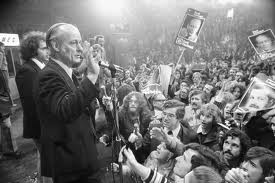 The night Rene Levesque lost the first referendum in Quebec. The province would try a second time to leave the country in 1995. The NDP are socialists and have little time for religion or religious symbols, although Mulcair appears to be siding with Trudeau – but then he used to be a Liberal. The Parti Québécois (PQ) is also a socialist party and favours secularism. They still remember the Duplessis years and how the Church helped to oppress Quebecers – je me souviens. And, of course, the PQ prefer any policy which would enable them to reach their end-goal of independence.
Quebec has always been opposed to multiculturalism. Half a century after it became national policy, Quebec’s minority government is proposing a ‘Charter of Quebec Values’, a racist, at least in the broadest sense of the word, attempt at shutting multiculturalism down. Much like the French Language Charter, Bill 101, introduced in 1977 by René Lévesque, the proposed charter Pauline Marois is proposing discriminates against those who are different – those who threaten the notion of a distinct society in the nation of Quebec.
It is just another brick in the wall for the separatists – a wall to further divide Quebec from the rest of Canada. Former premier Jacques Parizeau blamed the ethnic minority in Quebec for the narrow defeat of his 1995 referendum on sovereignty. Premier Marois claims her goal is to unite Quebecers, a euphemism for stripping them of their individuality and re-engineering Quebec to deal with Parizeau’s complaint.
Pierre Trudeau discovered multiculturalism in the recommendations of the Royal Commission on Bilingualism and Biculturalism (1963). And Ms. Marois has a commission of her own, The Bouchard-Taylor Report on Cultural and Religious Accommodation. If we thought multiculturalism was a complex topic, Taylor and Bouchard promote an even more complicated hybrid called ‘interculturalism‘.
A nation with diverse cultures is not one that rallies predictably for a common cause, such as Quebec sovereignty. So Premier Marois wants to instill Quebecers with a set of common values before the next referendum. If she needed a model, she might have looked to the Japan of the shogun era. For over 200 years the Japanese people were isolated from foreign influences; foreigners were expelled and their religions banned; trade and contact with the outside world was restricted; and a common language and social mores were forced on the people. The results of that unification process were impressive as we saw in the Second World War.
Europe, like Canada, once embraced multiculturalism, so much that chicken tikka masala has replaced fish and chips Chips as England’s most popular dish. However, Europeans, like some folks in Quebec, are concerned about the impending clash they envision with their traditional cultures. France is in the forefront of the fight against religious symbols, though the French government is perhaps more worried about ethnic ghettos, where streets and even suburbs have become enclaves and no-go zones.
Of course that isn’t the case for Quebec which has less ethnic diversity than B.C. or even Ontario. Toronto is now the most ethnically diverse city in the world. Quebecers are a minority within Canada and the downward spiral of discrimination is a human characteristic. So Quebec treats minority groups in the province less kindly than they themselves expect to be treated in Canada. The many freedoms Quebecers enjoy, being a part of Canada, they withhold from the cultural minorities they govern.
 The referendum in 1995 was a battle to keep Quebec in Canada but also to keep Canada a multicultural country. Finally and most importantly, Bill 101 and the emerging Charter of Values are just foundation blocks for the next sovereignty vote. Only a third of Quebecers have ever wanted to create a separate nation out of the province. But they recently elected a minority separatist government with that unwavering agenda as an end goal. Marois may appear to be pandering to a handful of intolerant voters with her charter, preying on their worst emotions. But she is just setting the stage for the bigger battle to come. She needs to deal with Parizeau’s complaint – even if that makes her look like a racist.
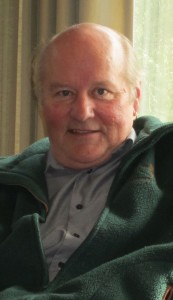 Ray Rivers was born in Ontario; earned an economics degree at the University of Western Ontario and earned a Master’s degree in economics at the University of Ottawa. His 25 year stint with the federal government included time with Environment, Fisheries and Oceans, Agriculture and the Post office. He completed his first historical novel The End of September in 2012. Rivers is active in his community. He has run for municipal and provincial government offices and held executive positions with Liberal Party riding associations. He developed the current policy process for the Ontario Liberal Party. Ray Rivers was born in Ontario; earned an economics degree at the University of Western Ontario and earned a Master’s degree in economics at the University of Ottawa. His 25 year stint with the federal government included time with Environment, Fisheries and Oceans, Agriculture and the Post office. He completed his first historical novel The End of September in 2012. Rivers is active in his community. He has run for municipal and provincial government offices and held executive positions with Liberal Party riding associations. He developed the current policy process for the Ontario Liberal Party.

 September 5, 2013 September 5, 2013
By Gordana Liddell
BURLINGTON, ON. Where should I go? Good Question. Actually, while this is one of the most common travel inquiries I get, it’s a terrible question. It’s far too general and can’t possibly be answered until you answer some questions yourself:
Let’s use the W5 approach, shall we?
 The world is your stage – what part of that stage do you want to walk on? WHO are you? Are you the type of traveller that wants to go to a popular destination; one that is deemed to be the most current and hip – where you are most likely to spot celebrities who go to the most fashionable spots in order to be spotted? Or do you want to travel to a place a little more out of the ordinary? Do you enjoy telling people where you have been in order to get the reaction…”where”? Would you prefer to see a destination in its genuine form or would you prefer to hit the parties and the crowds? You get my drift, I’m sure.
Your budget is also a tremendous factor in determining exactly where you will be able to go. Are you a prince? Or are you a pauper? The amount you wish to spend will not only help to determine your destination, it can also limit how you get there as well as the time of year you can afford to go. But there is usually a solution for everyone, as long as the limits are reasonable and the minds are open. Everyone should be able to get a way – your budget will help to define your parameters.
WHAT do you want to do when you get there? Lie down and not get up for a week, apart from getting yourself a fresh drink? Do you prefer to be active and, oh I don’t know…climb a mountain, or go horseback riding, or climb a mountain on horseback? Are you interested in history and architecture? Or is an endless coastline just about all you need to study?
WHERE do you see this all taking place? Before you choose the country you need to choose the setting. Beach? City? Ranch? Countryside? A combination of the above? There are many destinations that are blessed with more than one attribute. Would you like to focus on your favourite or do you like a little variety?
 Nature travel is always interesting and can be quite adventuresome as well. Is it expensive? WHEN do you plan to go? If you have decided that you wish to go on a beach vacation in the South of India and you have time off work in the beginning of July…I would advise you that it is monsoon season and it may dampen your experience. Time of year is very often a factor with regards to destination. It is also a huge factor in the price of tickets; these go hand in hand. Understandably so, higher fares are often directly related to the more “desirable” time of year.
WHY are you traveling? Because it’s awesome! Still, there are many reasons that people plan to take that plane/train/bus/boat/car out-of-town. Business, family vacation, girls’ getaway, some much-needed r&r, a-soul-searching-just-like-in-the-movies-journey, etc. ( I would never advise that last one to pack her bags and head to Vegas. ) Determine your motives and you are another step closer to nailing down that perfect location.
If you can answer at least some of the above questions I’m sure I can help you figure out some good options as to where you should go on your next trip.
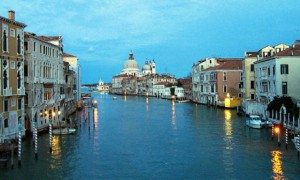 Venice has always been a favourite – do you go direct or as part of a tour? There are truly endless possibilities for travel in the world; there is always someplace we have not been and a unique way for us to experience it. Ask a million people who have gone to New York City and you will get a million different variations of how they experienced it. This is part of what makes traveling so wonderful and why we can never be “finished”.
There are countless questions related to travel; questions about the planning, booking, the journey and the destination. Have you got one? I would love to help make your next trip a little simpler, a little more enjoyable and perhaps even a little less stressful. Please send your questions to JustAsk@bgzt.ca and I will be happy to help.
 Gordana Liddell is our resident travel writer and Art Centre guru. She is a graduate of the University of Toronto, a travel industry veteran of nearly two decades, freelance writer, and most recently book editor. She is fortunate enough to live right here in Burlington with her family. Gordana Liddell is our resident travel writer and Art Centre guru. She is a graduate of the University of Toronto, a travel industry veteran of nearly two decades, freelance writer, and most recently book editor. She is fortunate enough to live right here in Burlington with her family.

 September 4, 2013 September 4, 2013
By Pepper Parr
BURLINGTON, ON. The whole idea of a farm – that place where the food is grown and the livestock cared for is something many of today’s young people just don’t get.
For today’s kids – food comes from the supermarket or more basically – it’s in the fridge isn’t it?
There was a time when Burlington was the fruit basket for the city. All of what we know today as Maple Avenue was fruit farms; there is a reason for calling part of Burlington The Orchard and Pepper Drive wasn’t after me – it was a place where peppers, red, green and yellow were grown.
Burlington Mall was farm land where fruit was grown.
All those farms were in time bought up by developers and either commercial operations or housing was constructed. The “old money” in Burlington is in the pockets of those farmers who suddenly found themselves wealthy beyond their wildest imaginings when the developers came calling.
 This is what Burlington was once all about. All the farmers put their produce on wagons and, before they all had tractors, the fruit and some vegetables were taken by horse-drawn equipment to what we today call Freeman Station but what was then the Burlington Junction station located right beside the large Freeman property.
How do you teach people what farming was all about? It was hard work and the crop you took in depended totally on the weather, which didn’t always cooperate.
The Region has saved a couple of locations that were once very prosperous farms. The Regional Museum is built into what was once a barn.
The Alexander Family Farm takes place each year just after school goes back. Takes place Sunday, September 8, 2013 – 10 a.m. – 4 p.m. at the Halton Region Museum.
 There was a time when much of Burlington was orchards or fields of vegetables. The orchard is on the north side of Dundas, west of Guelph Line. Admission: Children – Free; Adults (18 & older) $5.00
What will they do when they get there? Create – Play – Explore – Dance
There will be a “Nose-to-Beak” Birds of Prey show. Kids will get a chance to help create the Museum’s piece of the Quilt Trail. There will be a Geocache Challenge, a Discovery Hunt, a Farm Game challenges.
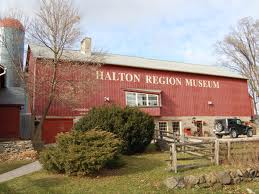 What was once a family farm is now the location of the Regional Museum and where Halton’s annual farm day takes place. A chance to do some “Pioneer Chores” – no live stock at the museum so there won’t be any mucking out of stalls and there are no chickens so hen houses don’t have to be cleaned out.
A chance to do some farm crafts and a visit to the Blacksmith Shop – and if they don’t know what that is – explain that it has nothing to do with face painting.
And finally there will be a Pond Study
Food and beverages are being provided by the Rotary Club of Milton. Food & beverage subject to additional charges/fees.
There will be dancing and singing along to tunes of: Groovin’ Toons, original & familiar kid’s tunes with a groove and Turkey Rhubarb.
If you’re one of those that gets to events like this early in the day you will see the start of the a mass-participation cycling event that is expected to bring 3,000 recreational cyclists to Halton Region for its inaugural event.

 September 4, 2012 September 4, 2012
By James Burchill.
BURLINGTON, ON. Ever wonder what the most controversial topics on Wikipedia are? The crowd-sourced and edited online encyclopedia is home to a lot of contention. Entries on the site can change in seconds, especially in the more controversial subjects, while others may be horribly written and stay that way for months because it’s not a topic of interest to most editors on the site.
So what are the subjects most likely to be controversial and see the most changes by the most editors? What are the topics that suffer the most revision as points of view clash?
 Controversial? Worth getting more information on? Well, I wasn’t the only one to wonder that. Some students and faculty at the University of Oxford (yes, that Oxford) wondered too. Lead by Taha Yasseri, the team decided to analyze Wikipedia to find out which topics were most controversial based on the intensity of their “editing wars.”
Not as easy as it sounds, though. Wikipedia is home to about 22 million articles in 285 languages with about 77,000 contributors working on it on any given day. Not happy with just the four million English version articles, though, Yasseri and his team decided to break down the controversies by language as well, looking at all 22 million articles to do it.
First, they had to define “controversial” as it applies to Wikipedia. Going by edits alone wouldn’t indicate contention as it could also mean that it’s a “live” subject that is rapidly changing or evolving, such as a current news event (e.g. a current television series or a current legal trial). So they focused on “reverts” instead, which are edits which are made by one person and then undone or removed by another. These are relatively common, though, but “mutual reverts” where an editor restores an earlier edition and then another editor (often the one who made the new changes that got reverted) changes it back to the new version again. These “edit wars” can go on for days in a back-and-forth struggle as editors duke it out over how things on the site are worded.
That definition works well for what the Oxford team wanted to measure. Using that, they were able to analyze Wikipedia and, after separating articles by language, create a “Top 10” list for them. The ten most controversial topics in English are:
1. George W. Bush
2. Anarchism
3. Muhammad
4. List of World Wrestling Entertainment
5. Global Warming
6. Circumcision
7. United States
8. Jesus
9. Race and intelligence
10. Christianity
 At least people are asking questions: still far too many people saying it’s bunk. Some of those are not surprising, of course, but others come out of nowhere. The top entry is a real surprise, since Bush has been out of office for over five years and is now relatively ignored by the news media. The second is a contentious but not often considered political philosophy that most of us might not even know exists. The third makes sense, as does the fifth, but who would have known that the WWE was so controversial?
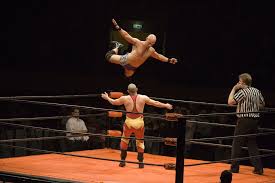 Go figure on this one: wrestlers? Indeed, this is a very interesting list. The team says that in every language, topics of religion are nearly always represented in the top five, as are topics like Israel, Adolf Hitler, and God. For the most part, though, these commonalities are overshadowed by the vast differences in what’s controversial in one language versus another. This often involves controversial war topics or native cultural topics, but can also be celebrity topics specific to the region the language is most commonly associated with.
You can read Yasseri et al’s work on Wikipedia measurements here.
 James Burchill creates communities and helps businesses convert conversations into cash. He’s also an author, speaker, trainer and creator of the Social Fusion Network™ an evolutionary free b2b networking group with chapters across southern Ontario. He blogs at JamesBurchill.com and can be found at the SocialFusionNetwork.com or behind the wheel of his recently acquired SMART car. James Burchill creates communities and helps businesses convert conversations into cash. He’s also an author, speaker, trainer and creator of the Social Fusion Network™ an evolutionary free b2b networking group with chapters across southern Ontario. He blogs at JamesBurchill.com and can be found at the SocialFusionNetwork.com or behind the wheel of his recently acquired SMART car.

 September 4, 2013 September 4, 2013
By Pepper Parr
BURLINGTON, ON. They’re back in school, and the whole tempo of the city changes. All those people with community wide programs are holding their committee meetings and timetables with task assignments are being handed out.
One of the signature events for Burlington is the Terry Fox Run for Cancer Research. The number of people who run is well over 1000 – 1200 last year. They raised over $80,000 Each year the number grows and each year more people find personal meaning in the run – many choose to walk and use the occasion to think about and appreciate someone they lost to cancer.
The event takes place this year on Sunday, September 15th.
Burlington has been doing this for 33 years and in that time has collected more than $1.5 million for cancer research.
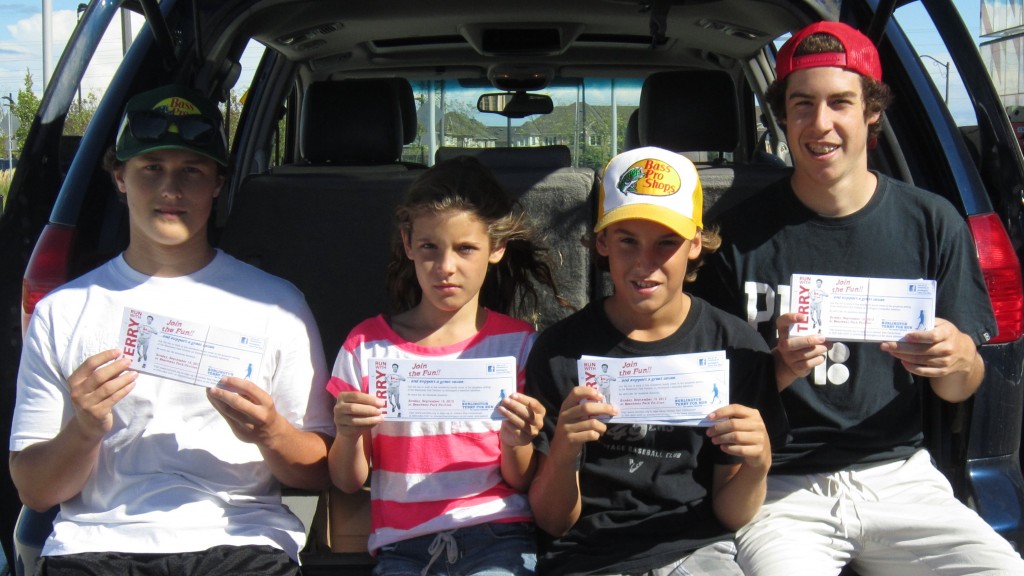 Part of the crew that did the door to door distribution of flyers to promote the Terry Fox Run.
Kevin Slovacek, Katherine, Kevin and Jack
The Gazette did some joint promotional work with the Terry Fox Run people and distributed more than 5000 flyers door to door in the city announcing the run and introducing people to the Gazette.
We certainly saw a significant bump in readership and assume there will be a corresponding bump in the number of people who take part in the Run.
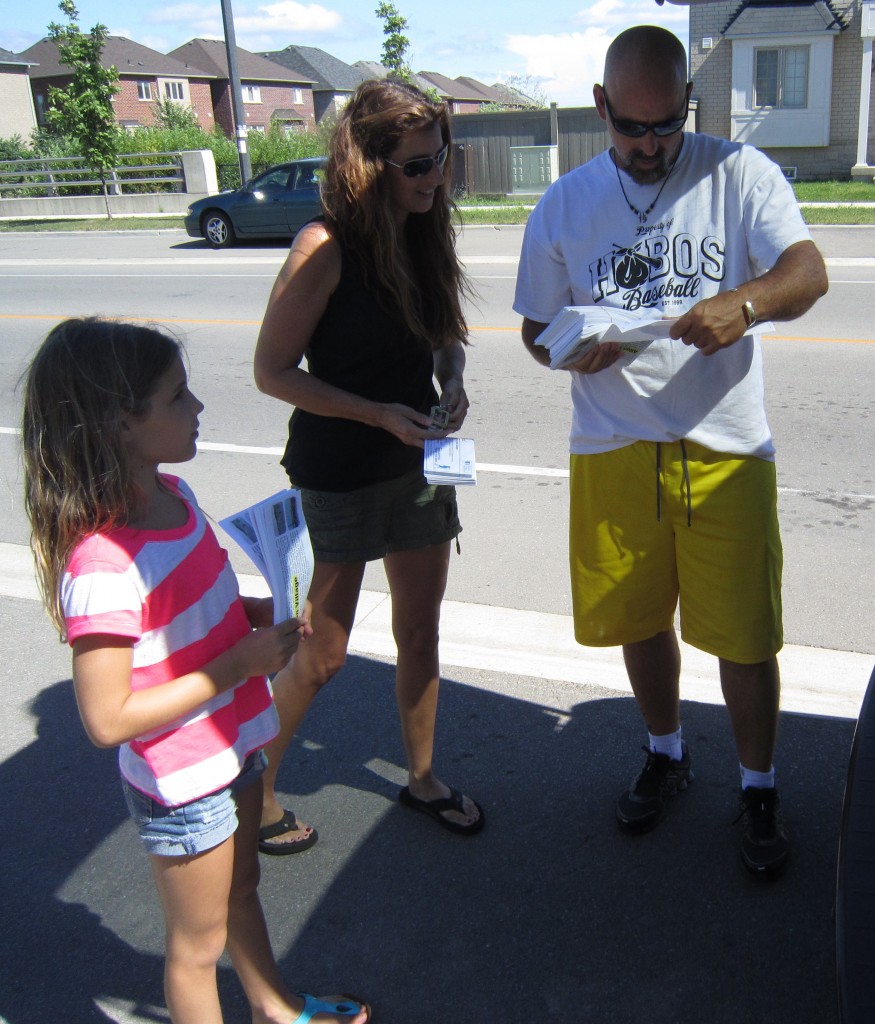 Daughter Kate, who now wants to be called XXX, on the lft with wife Bryana centre and Casey on the right figuring out which streets in Alton were covered. That distribution effort got done by Casey Cosgrove and his family. They were out on the streets, of Alton Village for the most part, because this is a new community with people from Mississauga and Milton moving in.
The people organizing the run wanted to include this community and tell them about this signature event that comes close to defining Burlington.– we will see how many of them decide to take part.
Cancer is a large part of the Cosgrove household. Casey has been battling this disease for a number of years and has taken part in a number of trial medication programs. He went as far as he could at the Juravinski Cancer Centre and is now on a program at the Princess Margaret Hospital in Toronto.
Casey doesn’t know what the outcome is going to be. He lives each day being who he is: expecting the best and prepared for the worst.
Last year there was a Cosgrove contingent in the Terry Fox Run and this year Casey took on the task of getting more people out.
A former candidate for public office (Ward 5), Cosgrove will tell you that had he won in 2006 Rick Goldring wouldn’t be Mayor today. The Mayor doesn’t see it quite that way.
Casey Cosgrove is showing this city what it means to give back – when you barely have enough to get by on yourself. His being out on the street in blazing sunshine, walking briskly from door to door while his wife and their daughter Kate, who has advised the world that she now wants to be known as Katherine, were doing the same thing a couple of streets, over is what Casey believes he has to do.
He believes fervently that there s a cure for cancer but knows all too well that it costs a fortune to pay the scientists and the researchers to find that cure.
We have made huge progress but the battle is not over.
Be part of that battle – show up on the 15th – at the Pavilion on the Beachway. Starts at: 11:00.

 September 2, 2013 September 2, 2013
By Pepper Parr
BURLINGTON, ON. Local boards and committees, the place where many political careers have started, is a vital part of the way Burlington works.
The city looks for volunteers to sit on a number of Boards and committees that range from the Accessibility Advisory Committee to the Burlington Museums Board.
Mayor Goldring maintains “The volunteers who serve on a board or committee help to create a vibrant community,” and some of those boards are certainly “vibrant”; noisy and disorganized might be a better way of describing the way some have operated.
Others have had a profound and lasting impact on how the city has developed. The Heritage Advisory Committee did such a good job of resolving the mess the city had on its hands with the historical designation of properties that they got close to a standing ovation from Council when they turned in a report and have gone on to basically create and them implement the policies that determine how recognizing and preserving historical properties is going to be done in Burlington.
Heritage was given a substantial budget to carry out their work and operate, to a considerable degree, as an extension of city hall.
The Waterfront Access and Protection Advisory committee did not fare as well and was sunset by the city before they managed to get very much done.
The city wants to fill positions on the following:
 Museum Board has plans for a major upgrade to the Brant Museum – is this a place for you and your skill set? Burlington Museums Board
These people oversee the operation of the Joseph Brant Museum and Ireland House. With the Brant Museum moving towards a point where they fund raise to make very significant changes this will be a busy board.
Burlington Accessibility Advisory Committee
Accessibility has always been strong in Burlington.
Burlington Cycling Committee
This committee needs some fresh blood; they did their best but were not able to get the city to go along with bike lanes on lakeshore road. They did their best – but it wasn’t enough. Some pretty disappointed people who need new energy and new ideas.
Burlington Mundialization Committee
This Committee manages our relationship with sister cities in Japan and Holland. Might be time for some people who do not come from those countries to be on this committee.
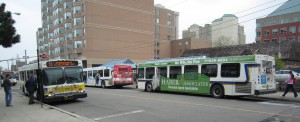 Is transit important? Do we spend enough on transit? Do people really want to pay for a transit service that is not all that well used? Have you experience with transit and could you contribute to the Transit Advisory Committee. Burlington Transit Advisory Committee
There is a new regime at transit now and their advisory committee is a lot more civil. Lots of work to be done here to make transit useful to more people.
Heritage Burlington Advisory Committee.
Probably the best Advisory Committee the city has.
Burlington Seniors Advisory Committee
With a growing seniors population this committee can play a very significant role in how best to be aware of the concerns, understand them and provide Council with some direction.
Sustainable Development Committee
New leadership on this committee will see some changes. Former chair served a full term and has left a strong team in place. Good place to be if the environment and matters of sustainability matter to you.
 Every year the Civic Recognition Committee goes through nominations for the Best Burlington has in the way of volunteer service. Is this something you could be part of? Burlington’s Best (Civic Recognition Committee)
This is the committee that handles recommendations for citizens that have excelled in their community contribution and deserve special recognition. The recognition evening could do with some improvement and getting the word out on what the city means by Burlington’s Best should bring in more nominations. These aren’t popularity contests –the city wants to recognize the truly deserving
2014 Doors Open Burlington Organizing Committee.
This committee needs new energy and a stronger sense of direction. If you’ve a passion fo helping the city tells its story – and it has a great story to tell – this might be a good place to dig in.
Terms vary from one to four years, with meetings held monthly. The application deadline is Friday, Sept. 13, 2013. Applications are also available in person from the clerks department at City Hall, 426 Brant St, first floor.
“Volunteering on a board or committee is a great way to share your talents and develop your skills,” said Danielle Pitoscia, the city’s acting manager of committee services. “It’s a great way to really dig deeply into your area of interest.” Comments like that from one of the best committee clerks this city has, gives you some sense of the energy the city wants to put behind its boards and committee. There is staff who are there to help; each committee has a Clerk assigned to it. The good ones are very good. Count Pitoscia among the good ones.
The comments we’ve made are the result of our experience with several of the committee and our observations of the others.
In the past the city has recognized a number of people who have made major contributions. John Boich, Jane Irwin, Amy Schnurr, Trevor Copp are just a few of the recipients that come to mind.
Go one line and download the application forms. Might be something that interests you and that you can make a difference on.
For more information on a specific committee, or to apply online.

 September 1, 2013 September 1, 2013
By Pepper Parr
BURLINGTON, ON. Premiers don’t just pop into town any time. Visits are calculated and timed and carefully planned. Sometimes media are alerted, sometimes not.
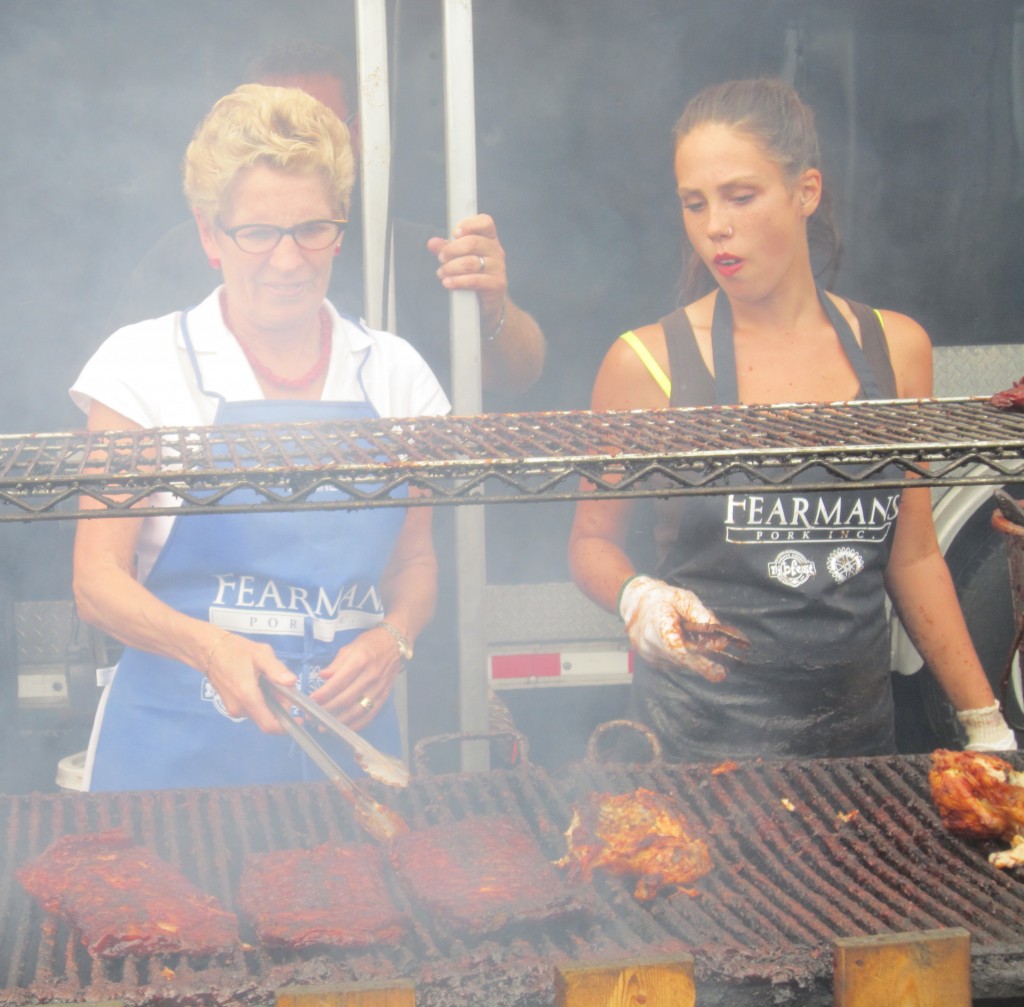 Part of Premier Kathleen Wynne’s on -the-job training as she learns to flip a rack of ribs at Ribfest. For this half day trip through part of south-west Ontario the Premier chose to start in Burlington at the Ribfest, do two events in Hamilton and on to Paris, Ontario to end her day.
These are casual summer walk abouts; no speeches – just shaking hands and posing for pictures. Premier Kathleen Wynne spent fifteen minutes in the Rotary VIP tent and then strolled the grounds – flipped a couple of racks of ribs, said a few words to the CHCH news camera and assured the Gazette that she liked ribs but was not a frequent eater, and that yes she had worn an apron recently, in fact she baked a pie at home just a week or so ago and that the smoke from the ribs grill was something she was used to – having recently advised the public that she had in fact had an experience with smoke in her distant past.
 Mayor Rick Goldring explains to these lads who the lady with the apron on is. The Ribfest was doing just fine the day we were wandering around. Decent crowds, good music and line ups at the more popular rib stations.
Interesting why the public lines up before one seller but not another. All the ribs from Fearman’s –the difference between sellers is in the sauce that each uses. Rising high above each stand are signs that tell of the awards the seller earned with their “bling” set out on a stand for all to see.
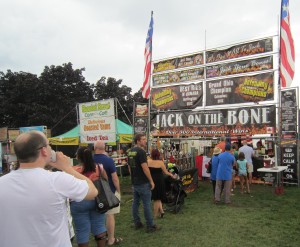 The length of the line-up told which ribs were most popular. Which ribs you buy is based on the price: – a rack is $22 at every station.
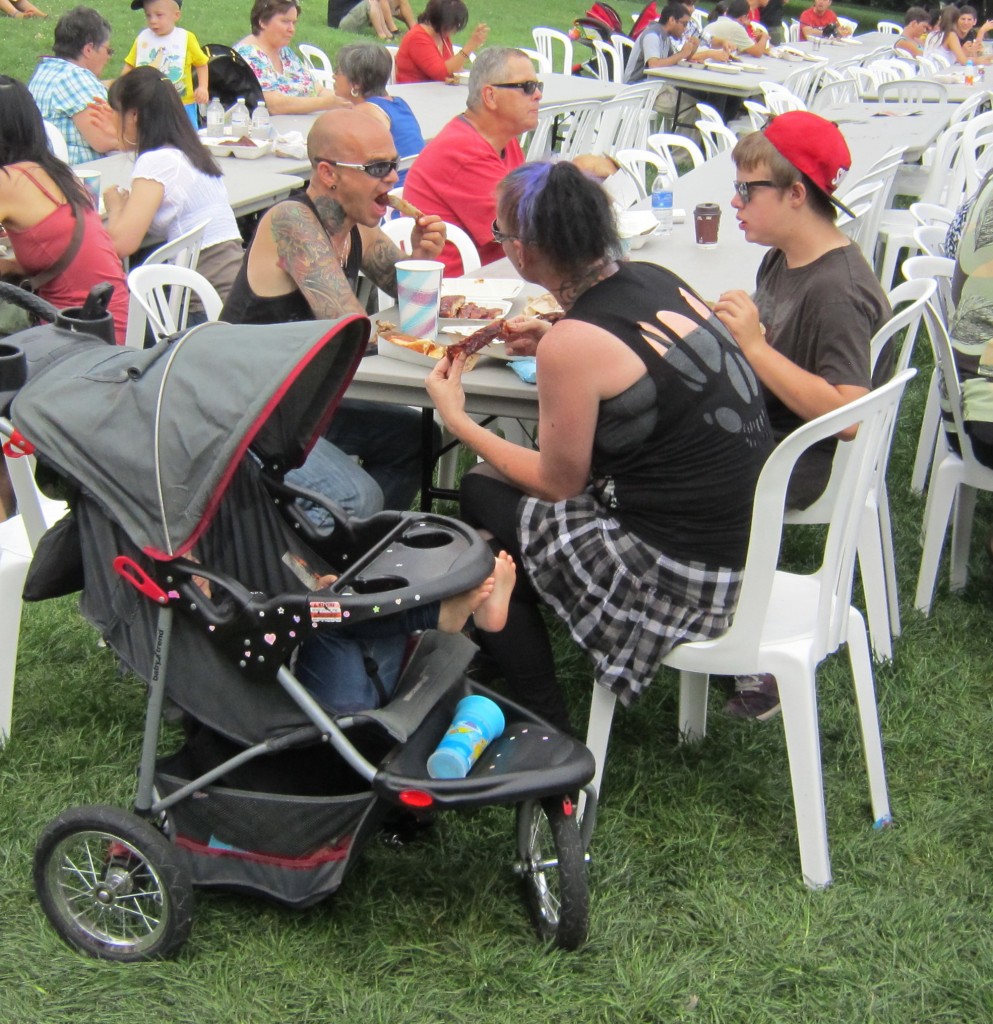 Chow down time – this was finger ‘lickin’ food. Getting into Spencer Smith Park for Ribfest is a lot different from getting there for the Sound of Music. There is fencing around every foot of the park except for entry points at each end. People are literally funneled into the park and have to sort of run a gauntlet of commercial enterprises that want you to take the Pepsi test, or look at the Sun Life insurance product or check out something to do with getting better use out of your car tires.
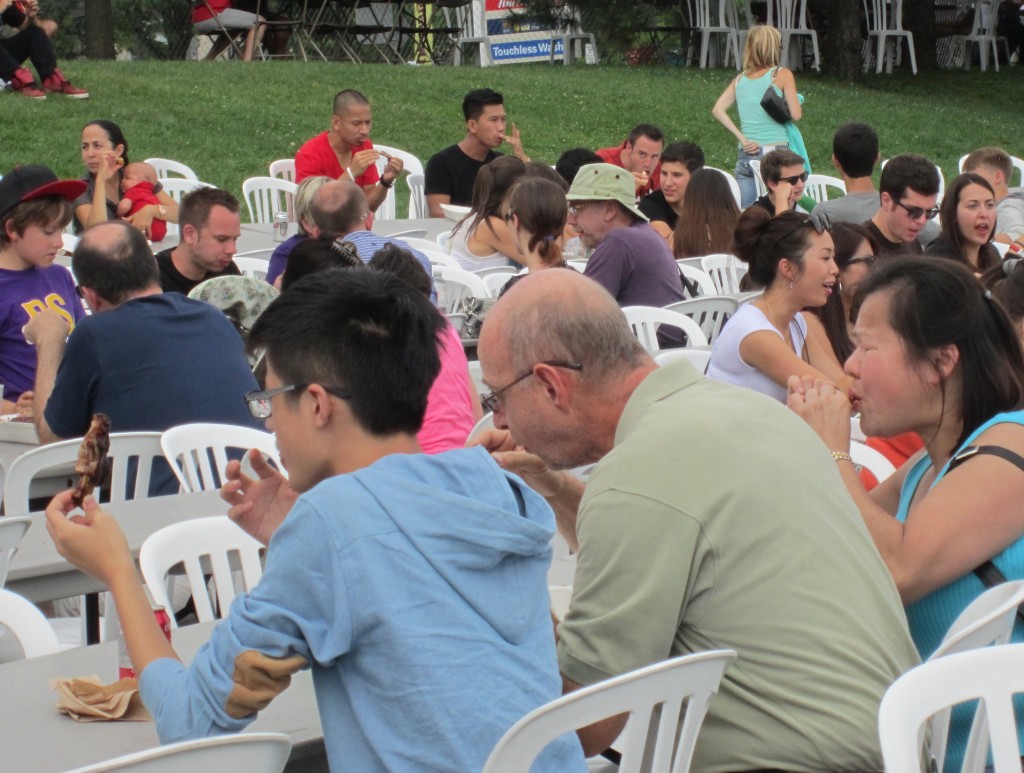 These are the kind of pictures that you look at to see who you know – and are they making a funny face. There is a videographer in there who knows what a good lunch is all about. Once you get through that “gauntlet” you are into the open area with those huge signs either side of the park. You don’t get to see much of the lake from the park. When you do get out of the park and choose to walk out onto the pier – always nice – there is a cluster of commercial vendors with their food trucks lined up. I got the feeling there was a little more hucksterism than I was comfortable with.
 Ed Eves, President of the Rotary Club of Burlington Lakeshore squires the Premier of the province around Ribfest Saturday afternoon. There didn’t seem to be a quiet place to sit in the shade and chat with a friend. The tables where you sat to eat reminded me of something out of men’s university dining hall where you felt the tables were going to be tipped on their side for a food fight. They were jammed in so tight that it was difficult to get to a seat.
One thing we did notice was how quickly the tables were cleared. There were more than a dozen stations to chuck the paper plates and a finger washing stand close by.
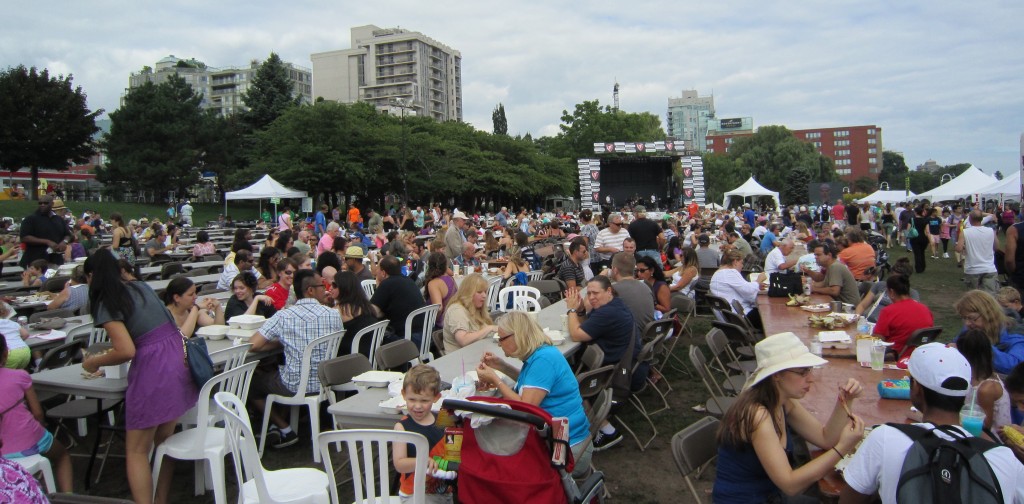 If you looked around there was still some sitting room. The weather was close to perfect and the music was good – great way to bring a summer to a close. Burlington appears to be the biggest Ribfest in the province and it certainly drew the crowds. Rotary sponsors the event – and at $22 a rack – Rotary must do well financially allowing them to do what they do around the world. Be nice to learn more about what they actually do with that financial haul?

 August 30, 2013 August 30, 2013
By Pepper Parr
BURLINGTON, ON. The province’s premier will be taking in Burlington’s Ribfest Saturday. Kathleen Wynne plans to spend an hour in the city, where no doubt she will be reminded that we are the safest city in the province, have the lowest crime rate and the slowest growing population – and anything else anyone said about us that was at all nice. The negative stuff – is there any?
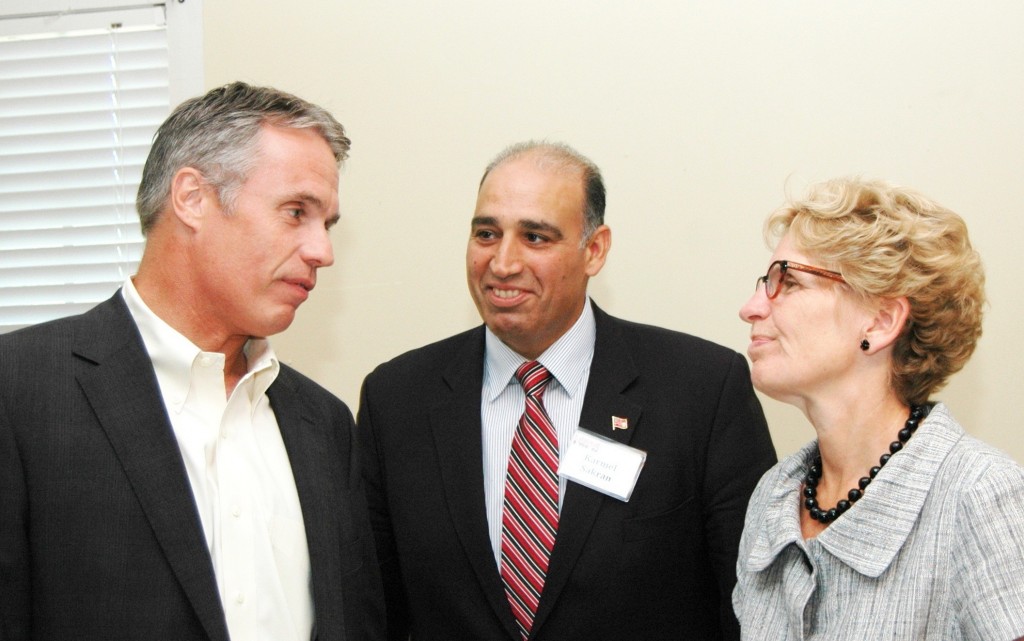 Mayor Goldring chats with then Minister of Transportation Kathleen Wynne. He wasn’t buying what she was selling then. Saturday the Mayor will squire the Premier around Ribfest. The visit is just one of those “popping in to say hello” things. Mayor Goldring had plans to be in Spencer Smith Park selling beverage tickets – he might just sell a handful to the Premier and perhaps talk about additional funding coming our way.
These casual get togethers can have interesting outcomes.
Wynne has been to Burlington a number of times in the past. She was in town during the last provincial election when everyone made sure she fully understood our views on any highway the province thought it was going to ram through the Escarpment. Wynne has been Minister of Transportation in the past and said during one of her visits that the problem with the transportation ministry bureaucrats was that they never got over being the Ministry of Highways when roads was what they were all about.
Now that Wynne is Premier she has to think about the bigger picture which certainly includes roads but also includes an economy that isn’t what it once was. She has an aging population that needs a different level of care, probably not what the current model of hospital can provide. She has parents who want the best education for their children that their tax money can buy and a population that is much more diverse than when she got into politics.
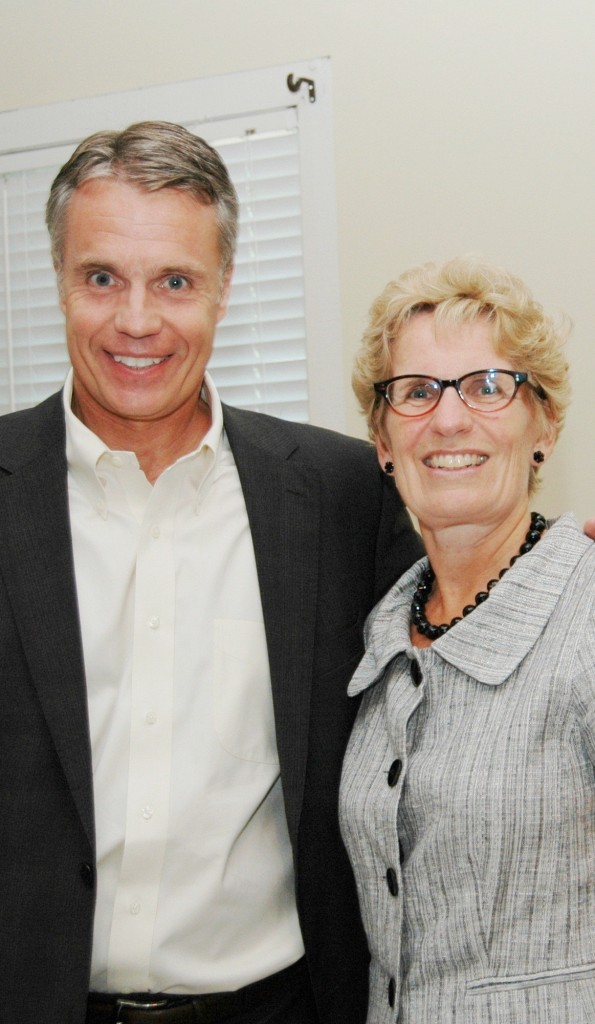 Mayor with the Premier: best buddies? Wynne is certainly a different kind of politician. Her lifestyle choice and her willingness to say that yes, “she did puff”, gets us out a phony stage where everyone knew but no one ever said anything. There was a time in this province when you couldn’t get a picture of a politician with a glass of beer in their hands.
Wynne has taken to touring the province on the weekends and Spencer Smith Park is a decent place as any to get out of the car for a walk – a little side trip out along the pier will put some colour in her cheeks and give those escorting her around an opportunity to explain, perhaps, how city council overcame immense resentment on the part of taxpayers over the cost of the thing but that Council bit the bullet, persevered and now everyone loves the thing.
The Premier is expected to be out there taking orders for ribs between 1:00 and 2:00 pm.

 August 30, 2013 August 30, 2013
By Pepper Parr
BURLINGTON, ON When the cooler weather sets in you will see Jim McNeil wearing his The Game Goes On jacket, the personal reward he got for heading up the drive to get Burlington Lions Optimists Minor Hockey Association – BLOMHA to vote for their team during the Kraft Foods contest that had $100,000 up for grabs. Burlington was amongst the finishers and saw a cheque for $20,000 come their way.
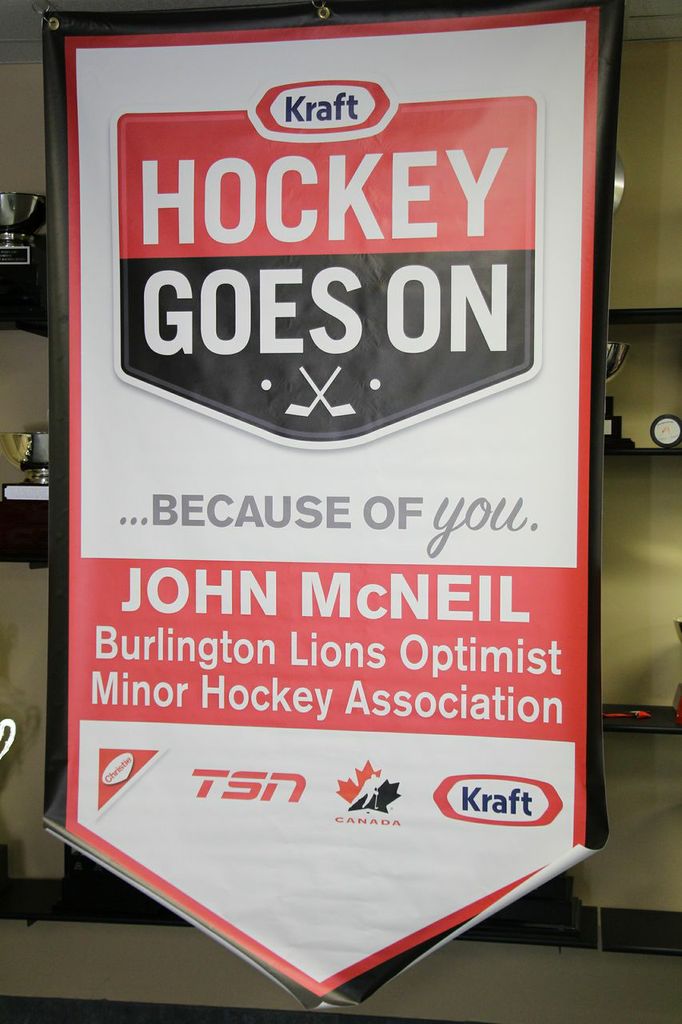 The mention of the corporate sponsor doesn’t dominate the banner – why would city hall want to get a fee for letting it hang from the rafters at the Appleby Arena. There is a banner BLOMHA was given as well, which they hoped to see hanging from the rafter at the Appleby Arena but the sharper pencils at city hall want to know if hanging the banner was part of the deal with Kraft – and if it was then the city would like some coin for promoting a product. Who cares – if a local group was able to work their buns off over a weekend and get everyone they knew to click on that vote button – why should city hall care if the banner they were given has the name of a corporate sponsor on it?
City hall did the same thing to the Arts in Action people who hold an annual studio tour; the city wanted each location to take out a permit. The artists managed to talk some sense into the people at the permit counter.
 Kirsten Priestner, the woman who nominated John McNeil as a participant in the Kraft Game Goes On contest makes sure the jack he was given fits properly. The funds BLOMHA earned, and they certainly earned those dollars, will be spent over two seasons to pay for upgraded goalie equipment and to cover some of the costs for families that can’t handle the full BLOMHA fee which range between $375.00 to $575.00 depending on age. The fee for 4 and 5 year olds remains at $375.00 and never increases.
The coaches will begin gathering on the 14th and meet in groups to get the year started. There are 100 different teams broken into 12 divisions with anywhere from 4 to 12 teams in a division.
BLOMHA focuses on sport as a way to build character and values. If a player happens to make it to the NHL – that’s nice but BLOMHA isn’t there to develop talent for big time hockey teams. There are other commercially oriented organizations that do that – BLOMHA uses hockey to develop the men that will lead when they grow up. There are a few girls who play in the league.
Rick Dawson, a former police officer and current Executive Director of the league explains that they are there to “develop life skills and teach kids to become accountable for their behaviour”.
 This is how you put your volunteers to work. There may have been some pizza slices somewhere in the room as well. Getting the volunteer help that s needed is always a struggle. “We think we can attract some high school students who are looking for a place to do their 40 hours of community service” adds Dawson. Give BLOMHA a call if this is a place you think you can serve at
The teams take to the ice September 28th, 29th to start their season.
BLOMHA go all kinds of coverage last year, first because it is a good league and also because of the way they organized to earn that $20,000. The 2013-14 season might see some wins over those London rivals.

 August 30, 2013 August 30, 2013
By Pepper Parr
BURLINGTON, ON. The water along the shore might be messed up with blue green algae and gas prices are said to be ready to touch $1.36 a litre but RibFest will start – so it can’t be all bad – can it?
Royal Botanical Gardens is going to hold the Teddy Bear Picnic, Royal Botanical Gardens between 11 a.m. and 4 p.m. to join the Teddy Bear Picnic. Don’t forget to bring your favourite furry friend.
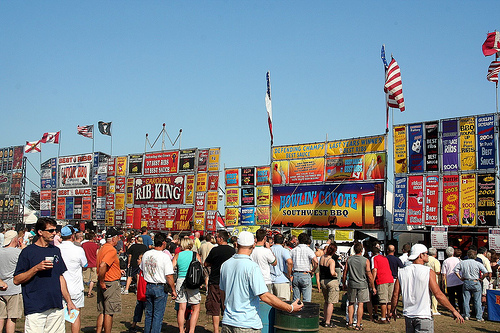 Ribfest Burlington – said to be the biggest in the province. Ribfest runs from Friday, August 3oth to Monday Sept. 2. The event runs from 11 a.m. to 11 p.m. on Friday, Saturday and Sunday and from 11 a.m. to 8 p.m. on Monday.
Weather: Saturday is expected to see a bit of rain, maybe a bit on Sunday as well but Monday is predicted to be sunny but a little cooler than the seasonal norm.
The nut cases will be on the highways – watch out for them. Stay off your Smart phone – it is smarter than you are but hasn’t yet figured out how to tell you that you can’t drive and work one of the things.
There are plenty of activities for all ages at city parks and recreation facilities including pools, arenas and community centres. Hours and program times vary over the long weekend. For information, get on over to the city website.
Burlington Transit will be operating a holiday service schedule on Monday, Sept. 2. The administration offices, including the downtown transit terminal will be closed.
Parking: Free parking is available in the downtown core at all meters, municipal lots and the parking garage on Monday, Sept. 2. The waterfront parking lots (east and west) do not provide free parking on statutory holidays.
What’s Closed: Holiday hours will be in effect for some city programs and services over the long weekend. City Hall: Burlington City Hall will be closed on Monday, Sept. 2 and will reopen on Tuesday, Sept.3.
The Burlington Art Centre is closed but the Art Etc Gallery Shop is open seven days a week. If Burlington plans on becoming culturally relevant – the Art Centre will want to think about being open on holidays.
Tourism office is open.
The Performing Arts Centre is, as they say in show business – dark for the weekend.
Provincial Offences Courts will be closed on Monday, Sept. 2.
 Teddy Bear Picnic at the RBG If you want to close out the month with a bang and make a really significant career change – Saturday is the last day to get your application in to become one of the people who will settle on Mars . I’m not kidding – so far 7000 Canadians have decided this earth is too much for them and they want to live in a colony on the red planet. Check it out.

 August 30, 2013 August 30, 2013
By Pepper Parr
BURLINGTON, ON. The Ontario Association of Art Galleries (OAAG) has listed the Burlington Art Centre as one of 28 public art galleries in 20 cities across Ontario nominated for its 36th annual Ontario visual arts awards. OAAG will announce the winners at a ceremony on Friday, September 27, 2013 in Toronto.
The awards are annual, province-wide, juried art gallery awards of artistic merit and excellence. They recognize the new exhibitions, publications, programs and community partnerships that have been commissioned by and produced by Ontario’s public art galleries over the previous year.
 Denis Longchamps, the male on the right, and the recently appointed Director of Programs at the Burlington Art centre took part in the public consultation meeting to determine what the Action Plan should be for the next phase in the creation of a Cultural Plan for the city. While Denis Longchamps is now the current Director of Programs, it is the work of Jonathan Smith, Curator of the permanent collection, who should probably get the nod for getting the BAC on the nomination list this year.
Smith got himself as part of the city’s collection when he had a fob from a pocket watch he owns cast as one of the bronze sheets that are part of the Spiral Stella outside the Performing Arts Centre.
Getting nominated for an award is not the only news at the BAC. Ian Ross, until very recently the Executive Director of the BAC advises that he is now known as the President and CEO of the place. His Board didn’t attach any additional money to the title but they did pay for the printing of new business cards. He has yet to change the title on the web site yet.
Ross announced that changes are being made in the organizational structure of the place. When you’re the CEO you get to do that. “There will be a Director of Enterprise, a position that will pull together many of the jobs that reach out to the community” explained Ross. “Membership will come under the direction of whoever is brought in for this job as well as art rentals and media.” Relations with the corporate community are also expected to be part of this position.
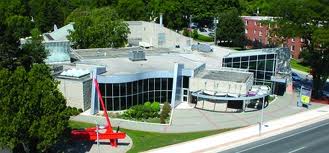 One of the best pieces of property west of the downtown core. Is this the best use for this location? The BAC is also the result of considerable speculation as to just how long they will continue to be located on the current site. The structure needs a considerable amount of upgrading to its plant and the building doesn’t exactly make the best use of the land it sits upon.
Burlington’s city manager has mused in the past about making better use of the assets the city has and the BAC is certainly a major asset on a prime piece of property. The Guild’s that get the credit for bringing the BAC into existence 35 years ago might have something to say about any ideas city hall may have about “re-aligning” that asset.
The fall programs will start soon; those Saturday morning art classes are one of the best offerings in the city. Check them out on the BAC website.

 August 29, 2013 August 29, 2013
By Pepper Parr
BURLINGTON, ON. If there was a platform that the Artists Collective wanted to put forward – and there is one – it didn’t show much of its head at the first public consultation meeting on the creation of a Cultural Action Plan based on the consultant’s report the city now has in hand.
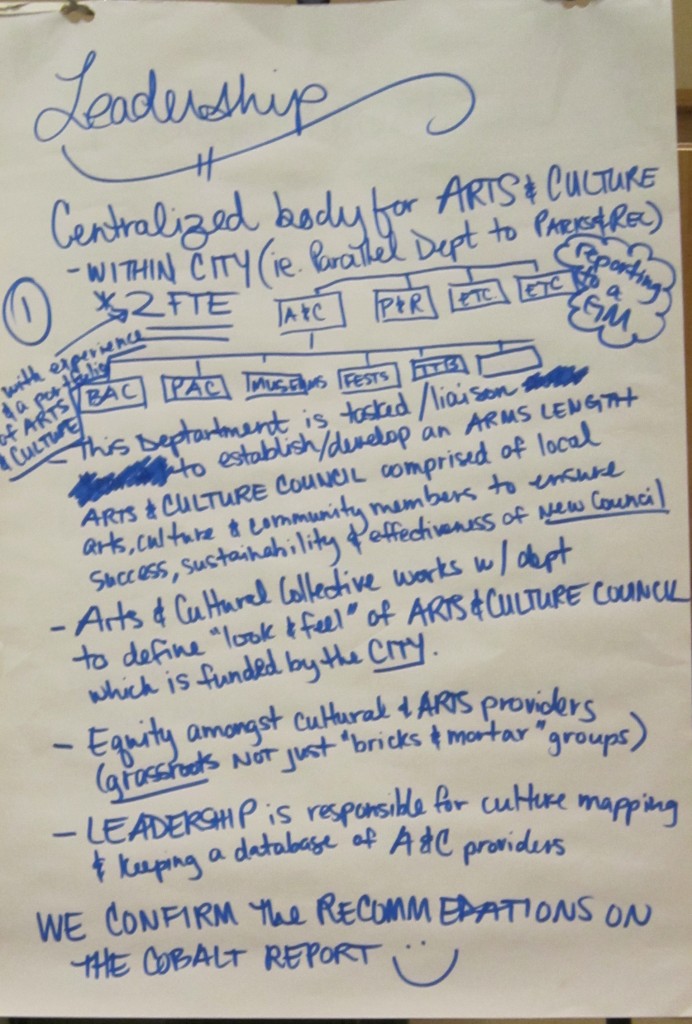 The Artists Collective was very clear – they want the Parks and Recreation people out of the culture business. They want people with training on something other than a trampoline, preferably with degrees in the arts and practical experience as well. Jim Riley, an artist who was in the room last night, made a significant point when he said online that “he noticed the table Trevor was at managed to present some of the platform of this collective. I recall one other table bringing forward some aspect of the platform”
The artists heard city general manager Kim Phillips correctly when she said they need not bother to show up at the second public consultation at Tansley Woods if they were in attendance last night.
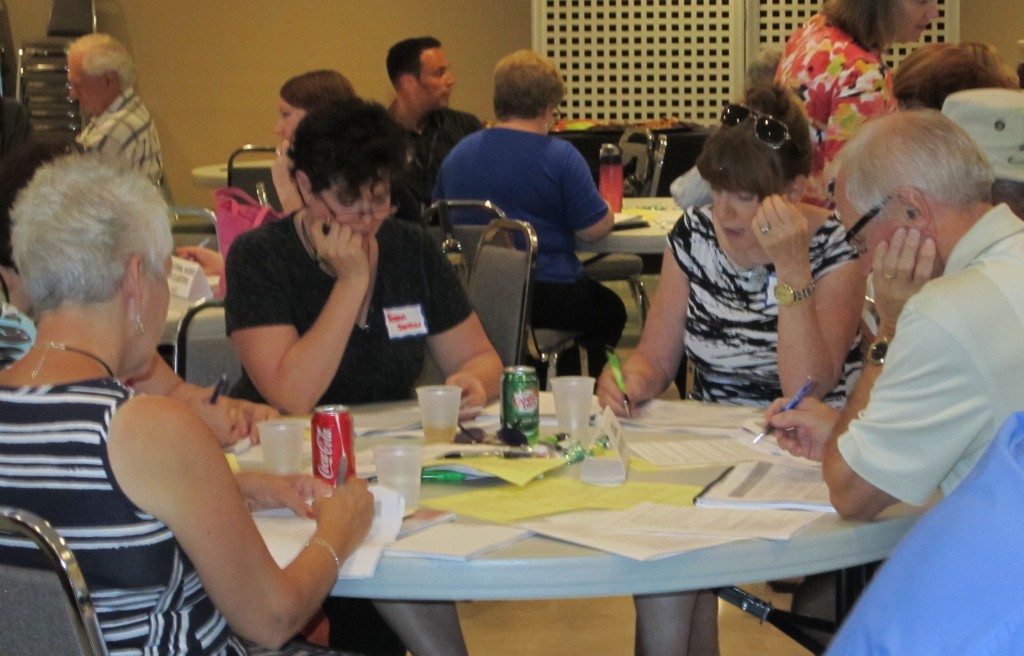 Teresa Seaton, centre, does the deep think with others during the public consultation on the Cultural Action Plan Teresa Seaton, a stained glass artist who was a prime player in the creation of the ten year old Art in Action program, that gives more to emerging artists in the way of financial support than the city does, asks: Are we really not allowed to go to the next consultation? Funny!
The artists need to learn how to make their case and to do so as forcefully as they need to – or the “gymnasts” will continue to do what they’ve been doing for the past five years.
Many felt it was great that the mayor stayed for the entire event.
 Trevor Copp, the Burlington actor who mobilized the arts into a Collective makes a point on leadership while Executive Director of the Burlington Museum’s operation listens. It was a decently attended meeting – but decent attendance isn’t going to change the way city hall thinks. Art and culture is not something that has a foothold in Burlington yet. The positive note is that the artists now realize this and they have organized and are pushing back. Push harder – or you will lose.
What did transpire?
The meeting was organized into working groups with people at different tables working through different subjects.
The city wanted to know what the artists thought in terms of vision at one table; the creation of cultural nodes was the topic at another, leadership and funding at another.
The discussion was solid for the most part. We did hear the word “proactive” used very often – but no one seemed sure what was really meant by the word. One artist made a point of asking that question: “What do we mean when we say we want to be proactive?”
The artists want to be sure that they define the word and that city hall understands and accepts the definition they create.
While it was a good meting the city failed to allow participants to adequately prepare for the meeting. There was a 25 page report that set out work plans for six key areas of focus each of which had a number of deliverables and initiatives embedded in it.
 Brian McCurdy, newly appointed Executive Director of the Performing Arts Centre got a chance to bend the Mayor’s ear. Many were impressed that the Mayor stayed for the full evening. Few realized his wife was there taking part as an accomplished artist in her own right. Three year action plans, basic review criteria and five-year goals were set out in the document. The consultant Jeremy Freiburger at CoBALT Connects, also set out what they felt was the core financial investment required and key shareholder contributions where possible.
It was patently unfair to expect those attending to give what is a key document for the development of a Cultural Action Plan the time and attention it needed when they get to a meeting. Some members of the Artists Collective did have a copy of the report – but many had never seen the thing. Yes, it was on the city’s web site – and if you found it, you were fortunate. The city is still working through the development of its e-gov initiative – they’re not there yet.
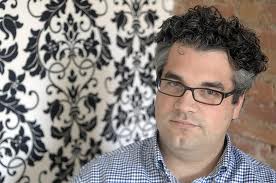 Jeremy Freiburger, the consultant who wrote the Cultural Plan and provided a lengthy set of recommendations, is probably the best cultural thinker west of Toronto and could hold his own with anyone in Toronto. He is credited with the creation of the Arts Walk event in Burlington. No one is sure just how much of his report will make it into the budget. Freiburger set things out for the city in plain clear language in his recommendations. It is now up to the city to decide what it wants to do. Public consultations are being held – the first was last night – they city is going to need to be much more inclusive and find a way to reach out to a wider audience. The Artists Collective has organized themselves more effectively – now, and they need to learn one key lesson: bureaucrats do not like to give up any power they have.
There is hope however. City Hall and City Council found that they could not manage the Heritage file and they basically outsourced that to the Heritage Advisory Committee. If the Artists can convince the Mayor and the city manager and then a majority of the council members there is a hope.
In the opening remarks to his recommendations Freiburger said:
Focus Areas: The focus areas were chosen to address the needs and desires we felt were most paramount in the community. While we acknowledge that there are other issues that could have been formally addressed in this plan we felt it was important to give you a plan that was achievable and targeted. A plan that provides an exhaustive list of options and actions only provides room for distraction and misalignment. We feel that if the community focuses on these core issues, other successes and resources will follow.
Timeline: Similar to the focus areas, we felt that providing a plan that was tied to a realistic timeline was essential. Oftentimes, as evidenced in the Internal Literature Review of this process, 10-year plans get lost within the hectic schedules of your organizations and the municipality. It’s all too easy to lose sight of a 10- year goal, but a goal within the next 12 months must remain top of mind. We also feel that plans with longer durations mean less and less to Council as they shift. Creating a shorter timeframe in which Council, staff and stakeholders can show ownership and see action is key.
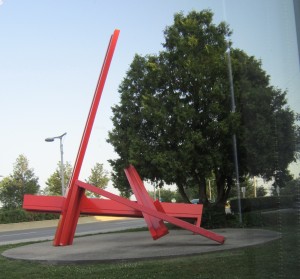 It was vision and cultural courage that got this piece of art outside the Arts Centre. The artists in the city are going to have to bring the vision to city hall and press hard for the cultural courage that will be needed to make the city a place with a cultural base. Vision: Through the recommendations provided we aim to see Burlington become a community that provides clear leadership on cultural development. Throughout its history Burlington has made strong choices to support the development of incredible facilities like the ones you manage, unique programs like Student Theatre and Teen Tour Band, great festivals, incredible outdoor spaces and a network libraries and community centres that rival any in the country. In our opinion your next strategic choices are about leadership, collaboration and community.
Throughout this process we did not only identify issues; we also connected with opportunity. Almost every citizen or artist, parent or cultural provider, business or politician we met offered possible solutions, expertise and ideas on moving the cultural yardstick forward. No one asked not to be further engaged.
With this in mind the principle gaps we see as paramount are essentially human resources and communication. The willingness is in the community – be that at Council, in neighbourhoods, or boardrooms. Everyone wants an opportunity to participate if they feel the request is realistic, supported and genuine. With a commitment to human resources focused on development, sustainability and communication we feel Burlington’s cultural community will thrive.
Finally, we want to impress upon you that this is not a plan for just the municipality to enact. Where possible we’ve given roles and responsibilities to cultural and non-cultural bodies, residents, City staff, artist and residents alike. We also set goals on the engagement of other funders, business partners and the creative/cultural industry as a whole to bring this plan to fruition.
As you review these recommendations know that they are just that – recommendations. You’re free to explore new ideas, reshape these concepts or add additional initiatives. We hope you’ve found our approach thorough, creative and inclusive and we look forward to working with you as you take the City of Burlington Cultural Action Plan through its final stages.
There is much more to say on this file.
Stay tuned.

 August 29, 2013 August 29, 2013
By Staff
BURLINGTON, ON. For what is seen as the traditional last weekend when you can swim for as long as you want and not have to even think about getting back to work or school the next day – the public beaches along the lake are not particularly inviting.
The Region’s Water testing reports – well the results are below. Not all that good.
Both the Beachway Beaches and the small Beach at the foot of Brant Street are deemed to be unsafe – you certainly don’t want to gulp down any of that water. Acton and Milton are the only places where the water is deemed safe. The lake is not being nice to us this weekend – and that would be because we have not been nice to the lake.
Feeding those geese is a large part of the problem.


 August 27, 2013 August 27, 2013
By Pepper Parr
BURLINGTON, ON. The natives are restless. The tom-tom drums are beating. Smoke clouds are being used to spread the message:
There’s a storm coming – a storm of colour and light and sound. August 28, 6:30pm at the Burlington Art Centre. The City is holding a public consultation for the Cultural Action Plan: come and get soaked, was the language used by the newly formed Artists and Cultural Collective that was organized to ensure that the voice of the people who “do” culture was heard.
 Jeremy Freiburger, author of the Cultural Plan for the city has extensive connections within the arts community and is credited with the creation of the Arts Walk in Hamilton. Will his report make it through the city hall bureaucracy? Burlington got the Cultural Plan they commissioned CoBALT Connects to do for the princely sum of $100,000 +. Now they are going out to the public for a response.
The Artists Collective has taken exception to the approach the city has put in place – they argue that there isn’t a real, living breathing artist on the Steering Committee, that is conducting the public consultation. In the past the artists have formed their own small groups and griped or complained about how they were treated. The big dollars and all the energy went into putting up buildings and now we have a Performing Arts Centre that theatre groups can’t afford to use.
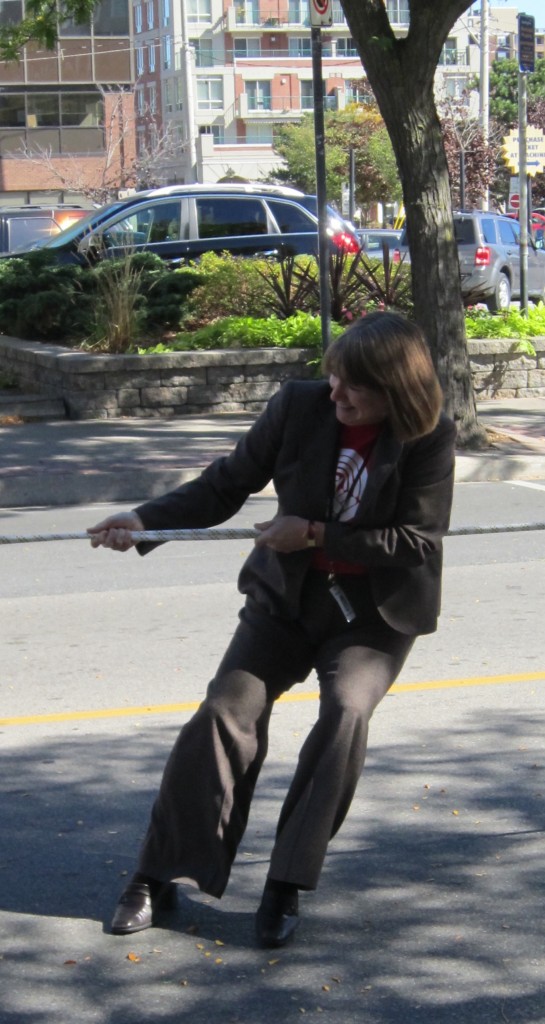 City General Manager Kim Phillips, who now has the cultural file on her desk, will need to pull hard in a number of directions to produce a report that satisfies the artists and can get approved by a city council that isn’t big on the arts in general. Lip service is the order of the day for this city when it comes to culture. The Artists take exception to a situation at city hall, where people with physical education backgrounds in the Parks and Recreation department oversee culture. The artists feel they are neither heard, understood or represented. They want to see a change and have set out five points they maintain are essential in any cultural action plan city hall staff send along to Council.
The artists collective has created a bulletin board their members use to communicate electronically and posted five points for their members to consider and take to the public consultation meetings.
The recommendations from the now 200+ strong organization were developed at a number of Town Hall meetings held during the summer when they identified five top goals for any Cultural Action Plan.
The five recommendations from the Collective are:
1. A distinct Arts & Culture department within the City. We require focused leadership for Arts & Culture from within the City to function effectively. This is primarily a restructuring of existing City elements – grouping Art in Public Places, Festivals And Events, Tourism, Teen Tour Band, Student Theatre together – along with 2 FTEs reporting directly to a General Manager within the City by the end of 2014.
One appointed, the head of the new Department – who should be a qualified and experienced Arts & Culture administrator – would have the initial task is to gather input and research towards point 2:
2. A funded external, arm’s-length Arts Council. This is a tricky and key point to moving forward. It requires a balanced representation of Arts & Culture makers in the City and needs to have clear sustainability plan in place in order to succeed. It’s precise role and model would be based on the research, input, and recommendation of the new Arts & Culture department in partnership with the Arts & Culture Collective.
With grassroots support and an infrastructure developed in partnership with the City, this external arm’s-length Council can effectively optimize the Arts & Culture of Burlington. We would look for this plan to be developed over 2014-2015 and receive approval as a part of the 2015 budget.
These two elements – an internal and external organizations – would end the history of isolation and fracturing that has characterized Arts & Culture in Burlington. This partnership could then advocate and address our remaining top concerns in 2015 and beyond.
3. Grants for Arts & Culture makers in the City. Develop a grant program to support Artists and achieve the City’s economic and cultural goals. In order to make this an innovative city investment in Artists are necessary.
4. Space. Spaces for Arts & Culture activities are too expensive and too few – we need significantly better rates, more space for us to realize our aims.
5. Review the Bylaws and Permits. Existing Bylaw and Permit systems are making Arts & Culture events and business ventures prohibitive. Better systems will ensure accessibility for private and public developments.
Laudable and certainly debatable – it will be interesting to hear how the city types responds to these.
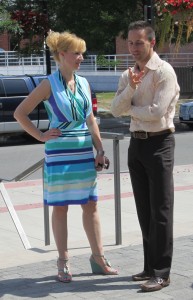 Trevor Copp talks with Angela Paparizo during the unveiling of the Spiral Stella at the Performing Arts Centre earlier in the week. Trevor Copp operates a professional theatre company, Tottering Biped Theatre and was the instigator and prime mover of the Collective. When he became aware that the city had deferred a meeting to discuss a Cultural Plan it had been holding for some time he started to organize and rally the arts community to present a unified front.
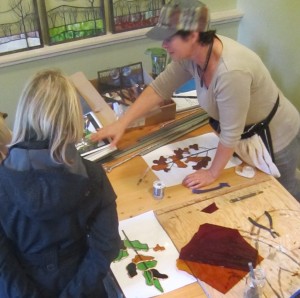 Teresa Seaton, a stained glass artist has been a prime mover behind the annual Art in Action tour – and is now part of the newly formed Arts and Culture Collective. Copp argues that the arts have never been given the kind of attention they need and that the focus has been on bricks and mortar. The city currently has one person with training working on the arts file – half time. Copp sees the Collective as a “common place for the artistic voice of Burlington. Musicians, photographers, visual artists, writers, culinary artists… all are welcome! Consider this the “unofficial Arts Council” board of Burlington!”
Teresa Seaton, a stained glass artist and a long time arts advocate wonders aloud when Burlington can take part in the provincially directed Art Days that take place in many communities across Ontario where a 3 day-long, annual collaborative pan-Canadian volunteer movement takes place pulling together all the cultural threads in a community.
 There is some international standard art produced in Burlington – the city is looking for a way to create a Cultural Action Plan to build on the successes. Are the right people in place to do this? Two years ago the Art in Action people, who hold an annual studio tour were told they had to get a license for each of the studio location the public was invited to tour. Artists working out of their homes were lumped in with people going door to door selling aluminum siding or driveway sealing services. The artists felt the city should be encouraging the development of their community rather than seeing them as a source of permit revenue.
The city now has a new Executive Director at the Performing Arts Centre who brings a strong reputation for being able to see the bigger picture and create a sense of community and direction for the arts. In Kingston where he last served, Brian McCurdy was referred to as the cultural guru; that is certainly something Burlington could use. The city has never had a clear sense as to what it is culturally. It seemed to feel that once the Performing Arts Centre was built the job was done – the artists have organized themselves to tell the city that art and culture is not about buildings – it is about people expressing themselves through different art forms – not something that comes easily to a city that grew out of farm land that produced apples, pears and peppers.
Burlington has been the soil from which very significant groups have emerged – but they left town just as soon as they had strong enough legs to get to the GO station. From time to time they come back and entertain us. Copp would like to change that and hopes he can be part of a movement that makes it possible for artists to earn a living here – now.
For its part city hall wants to now create a Cultural Action Plan that it can take to Council. Staff wants to produce a document that includes a vision, leadership, communication, cultural nodes, local investment, including support for individual artists and emerging organizations and events along with some way to measure the results of the city’s efforts.
What bothers the artists is that the people heading up the public consultations are not artists – they are bureaucrats who, the Artists Collective don’t feel understand how art works and what it needs to be grown.
The city has organized two public meetings; one at the Burlington Art Centre this evening and a second meeting at Tansley Woods on Thursday, September 12, Community Rooms 2 and 3.
These are going to be interesting meetings.
The results will go to a Council meeting in October – at a time when council members are beginning to hunker down for the municipal election in 2014. This Council couldn’t agree on creating bike lanes on Lakeshore Road and wasn’t able to get a private tree bylaw in place because they felt it offended too many people.
If they couldn’t muster the courage to save the trees – is there hope for the artists?

 August 25, 2013 August 25, 2013
By Pepper Parr
BURLINGTON, ON. And there it was. Burlington’s first piece of public art that was the result of a joint private benefactor, public funds sculpture sitting outside the two-year old Performing Arts Centre.
The art was the result of an idea Burlington businessman Dan Lawrie had that led to a conversation with former Centre Executive Director Brenda Heatherington, about a sculpture for the Centre. The idea worked its way to city council where they agreed to add to the generous financial contribution Lawrie had made.
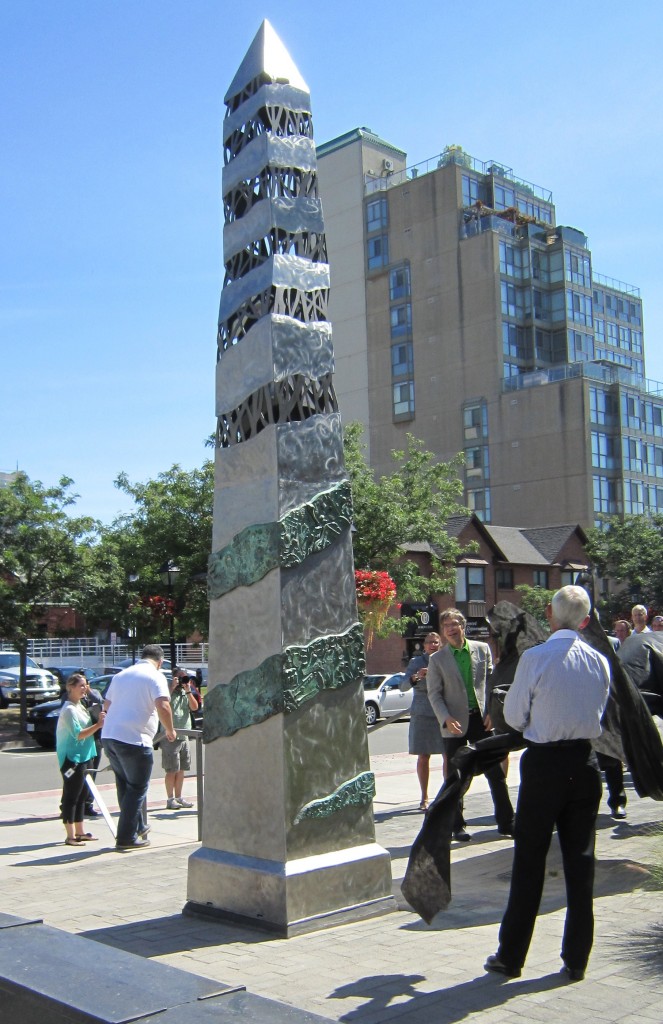 And there it was: Burlington’s Spiral Stella unveiled. That brought the city’s Public Art contractor Jeremy Freiburger into the picture. He was tasked to put together a jury to decide what should be installed. A jury was selected and a decision made. Throughout the process the public was involved and the result was a gathering of citizens on a bright sunny day, to unveil the 17 foot sculpture done for the city by New Brunswick based artist Peter Powning.
The jury, made up of Burlington Art Centre president Ian Ross, artist Trevor Copp, Emma Quin, Executive Director of the Ontario Craft Council narrowed the 119 entries down to three finalists and chose Peter Powning’s submission.
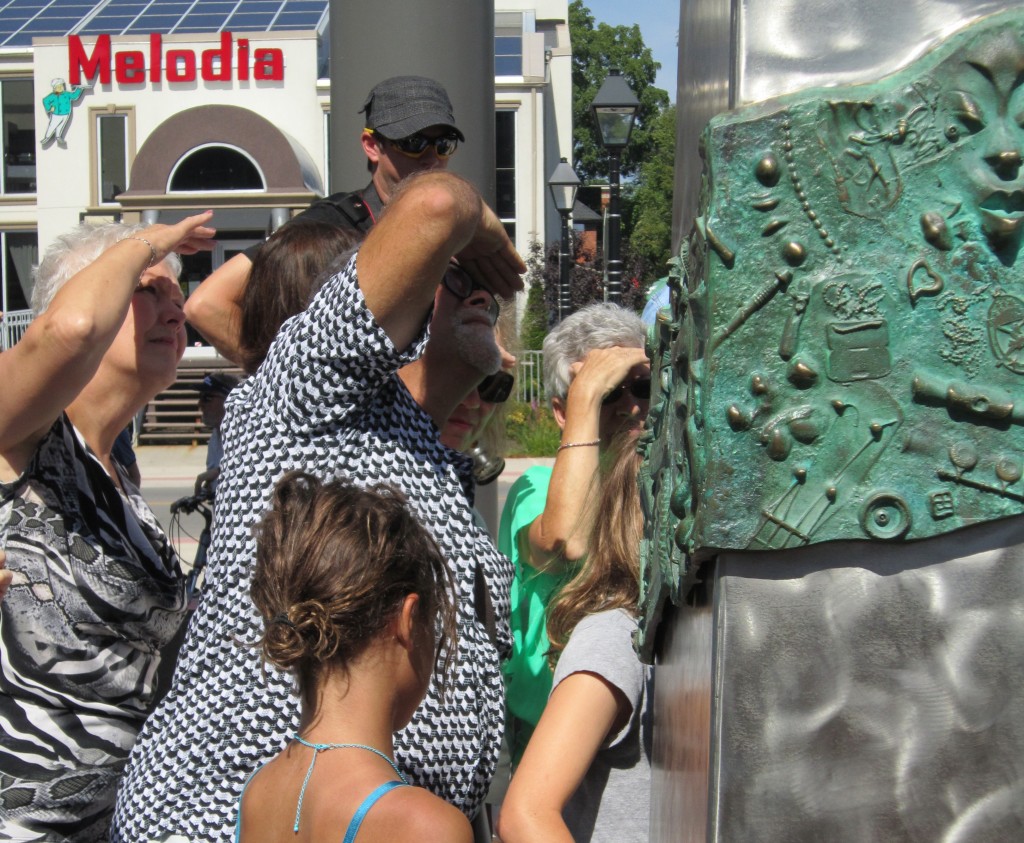 And now the Stela gets its first public close up. Do they like what they see? Will it grow on people? Was it a good idea? The city wanted art that involved the public and that brought out the idea of a “cultural mulch”; a phrase that was as new to Burlington as it was to the artistic community. Cultural Mulch was described as “stories about who we are and where we grow.”
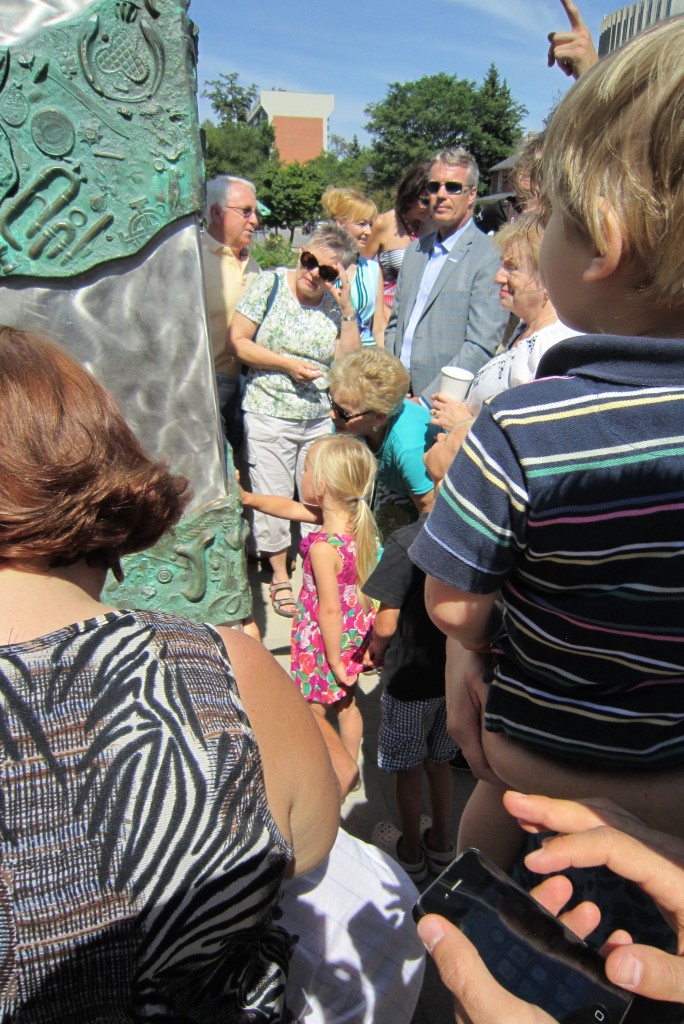 People gather around to see what has been placed into the sheets of bronze that are attached to the Stela. The word was spread quickly as people photographed and “tweeted” about what they were seeing. That led to a number of sessions where Powning took plaster impressions of various artifacts the public brought in. Powning had no idea what the next person in line was going to give him. Some brought in old keys, other brought in a pair of binoculars that had belonged to their grandfather. Another person brought in a pocket watch fob while yet another brought in a ticket from the opening day of the Centre.
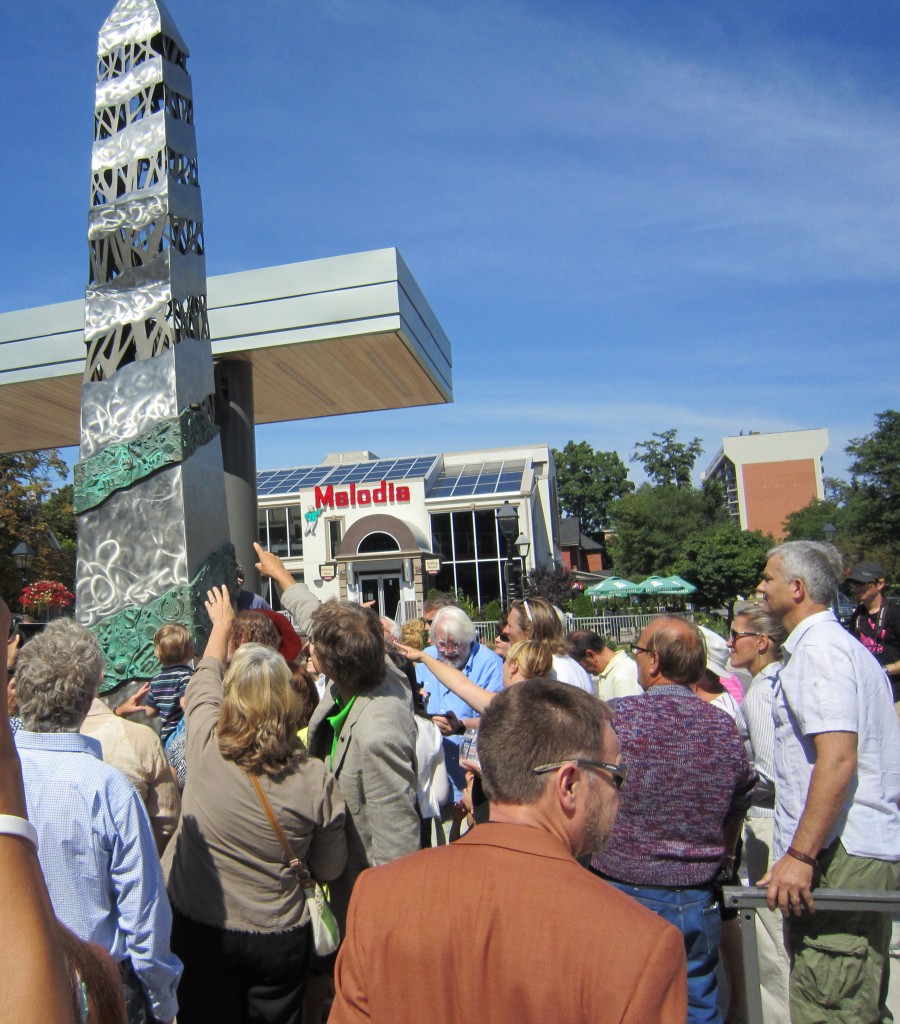 The Spiral Stela was certainly getting a lot of attention from the unveiling day crowd. What was that piece, and that piece there, where did that come from. The Stela needs a close look and some time to figure out what it’s all about. There were medals and toy trucks – anything the people of Burlington thought described who they were. With the plaster impressions done Powning trucked it all back to his workshop in New Brunswick where bronze castings were made which were then attached to the stainless steel obelisk shaped structure.
The Spiral Stela is now, like the Pier, part of the city and in time the public will come to appreciate what they have outside the Centre. Jeremy Freiburger, who also wrote a Cultural Plan for the city, believes Burlington has begun a change to a more artistically sophisticated city.
Ward 2 Councillor described what had happened very well when she said “the role of public art reflects what a community is” and what is crafted into the sheets of bronze on the Spiral Stela certainly describes the city, rather proudly.
Public art was described by Dan Lawrie as a “manifestation of a community coming together” and is a lot more than a possession but rather “a collection of memories that will get passed from generation to generation. It is a perpetual memory and a permanent landmark.”
The beauty of a piece of art is usually in the eye of the beholder. When good art is made part of the public environment the understanding of what art can do and the impact art has on our daily lives goes through a transition. Some art is accepted immediately while other art is part of controversial conversations for a long time.
Peter Powning spoke later to a small audience at the Art Centre about public art and the impact it has had on his career. Powning earns his living working full-time on commissions which come from the corporate sector but is driven now to a considerable degree by the municipal sector.
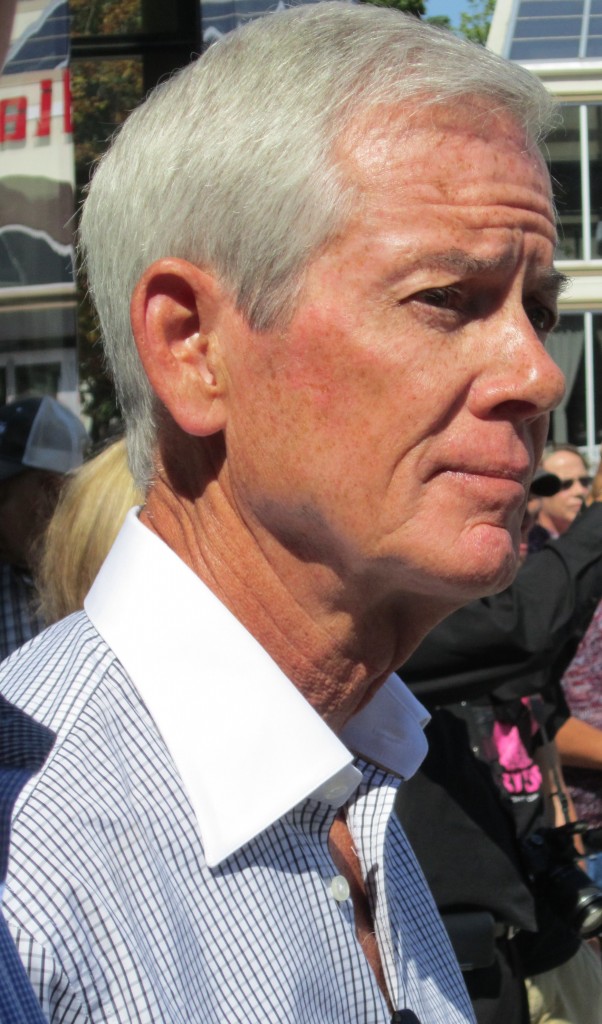 It was Dan Lawrie’s idea and his willingness to put up $37,000+ of his own money that started the process that ended with a piece of public art being unveiled outside the Performing Arts Centre. In 1983 Powning was able to convince a developer to include funding for art in a project budget. One of his early projects was a piece of art in the Market Square in St. John, New Brunswick that Powning said is “still there and holding up very well”.
The value of public art explained Powning is that it gives a community an opportunity to say who they are – to say what a locality’s destiny is. It is a cultural eruption that has value that accrues to a community.
When Powning saw the notice Burlington published for public art submissions and he looked at the site he immediately saw some very interesting potential. When he learned that the city wanted significant intense community participation Powning knew this was a project he could develop and convinced the jury he was the man to do the job.
Powning was one of three finalists out of the 119 artists who responded to the call.
 Rick Burgess, on the left with Mayor Goldring and sculpture benefactor Dan Lawrie look over the newly unveiled piece of public art. Public art explained Powning can be “serene, bold or provocative”. If it results in controversy there is growth in the thinking of a community and as long as it is not too far outside commonly accepted boundaries acceptance takes place.
Powning feels public art helps a community gets away from the “big box” culture that is dominated by a profit or loss report. Buildings are put up for profit where the objective is to keep costs down. Spending thousands of dollars on something that does not have a profit attached to it is a hard sell not only to developers but to the general public as well. If you have been following the comments about spending public money on the Freeman Station you will get a sense of how the public debate plays itself out. Pay particular attention to the comments part of the story.
The evolution of art for the public has grown from bronze statues of Kings and Queens and major public figures, usually military types to the Rebecca outside the Art Centre that is still surrounded by controversy.
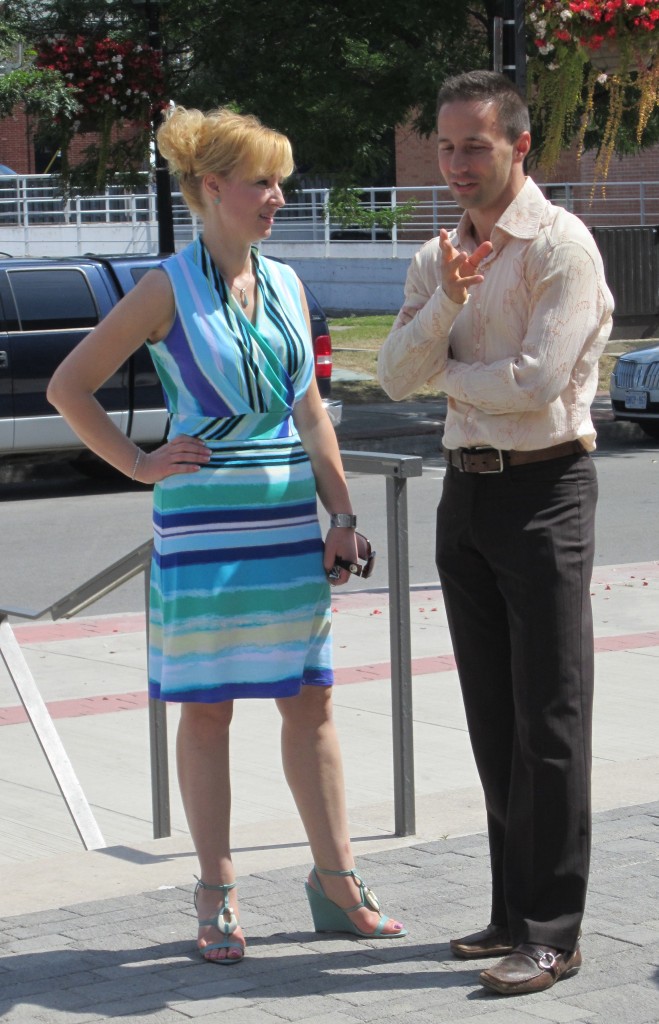 Cultural projects manager Angela Paparizo and Stela selection jury member talk about the next project for the city? Powning points out that public art has moved away from themes and is not tied down to anything specific but is now much more interpretive.
Powning convinced the public art jury to go along with his Stela approach but had no idea what he would be given by the public to work with.
As individual artifacts were put in front of him he had to make the plaster impression but at the same time listen to the story people told and remember what he heard and what he felt as he listened.
All these words and feelings were taken back to New Brunswick where the creative process began. Where should the individual artifacts be placed? Is there a theme that comes out of what he was given? Is there a theme he wants to create? What are the space limitations he has to deal with?
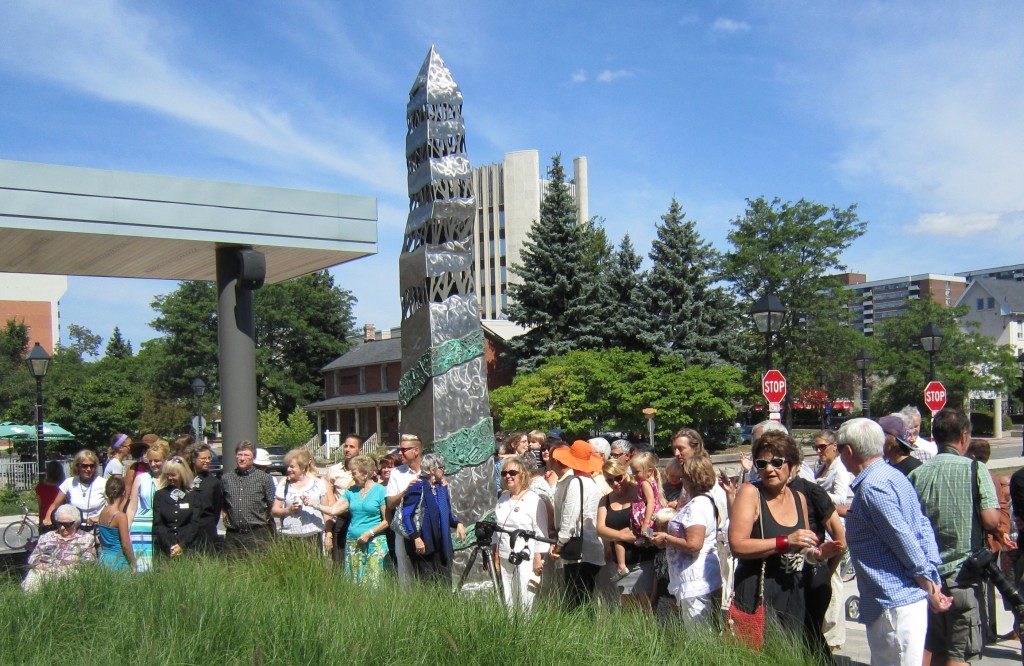 Were you there? You should have been. People milled about and asked questions and talked about this newest addition to the city’s cultural fabric. “There are no rules for this kind of work – it is pure visual improvisation”, said Powning.. There are breakthroughs as you are doing the work. “You count on those” added Powning who has done a number of Stela’s across the country. One of the more outstanding Stela’s was done in Canmore, Alberta where there was a theme based on eagles that would fly between two mountains at the edge of the city. Eagles became the theme for that Stela and Powning built on it.
Burlington didn’t have a single theme. For once the Burlington bookends of the lake and the Escarpment didn’t take over the dialogue; instead Powning worked from material given to him by the community.
The result is a bronze structure that now stands outside the Centre that is expected to become the hub of a community’s cultural aspirations.
Powning and his wife, a writer, were married when Peter was 19. They had decided they were going to live “off the grid” long before that was an accepted phrase. They were part of the “back to the land” movement, and live in a place where the telephone line doesn’t always work the way most of us expect it to work. They have enough in the way of solar panels on their buildings to supply most of their energy and grow much of the food they need.
Powning will keep in touch with how Burlington reacts to and grows with its Stela. Public art does have to be maintained; you can’t put it up and just leave it there. Burlington’s Spiral Stela is covered with a coating of wax that makes it easier to clean and Powning will probably come back to Burlington to put a new coat of wax on the sculpture in a couple of years.
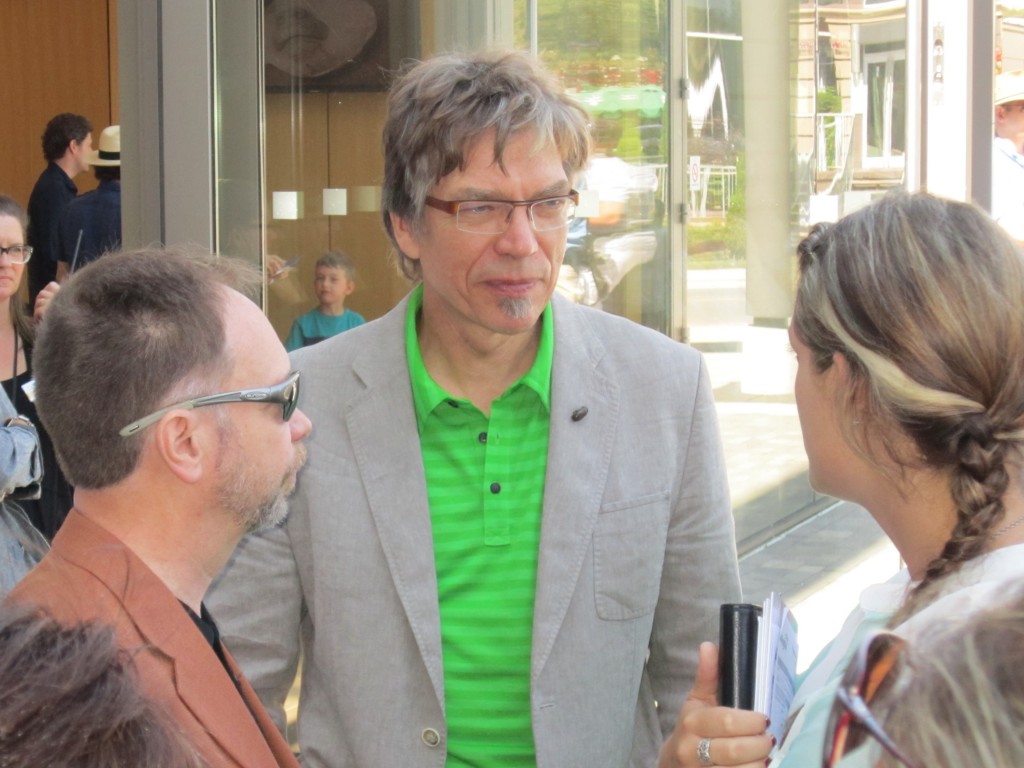 Performing Arts Centre board chair Rick Burgess on the left with artist Peter Powning centre, talking to a city staff member. Before getting driven to the airport to return home, Powning asked for some time to get back to his sculpture and take a few pictures – he has been so busy getting it installed and talking about it that he hadn’t had any time to photograph the work.
The public will now begin walking over to the Stela just the way they now walk out onto the pier. In the not too distant future the city hopes to have a web site with many different views of the Stela where people can tag different parts of the bronze pieces.
The art does need some sort of a plaque or notice put in place that explains what the object on the bronze portions are all about – and that’s about the only criticism one can make about the unveiling of the Spiral Stela in front of the Performing Arts Centre on a sunny Sunday morning. We did good.

 August 25, 2013 August 25, 2013
By Pepper Parr
BURLINGTON, ON. It was expected to be a pretty simple task. Get the Spiral Stela from the shipping yard it was stored in down to the Performing Arts Centre and erect it.
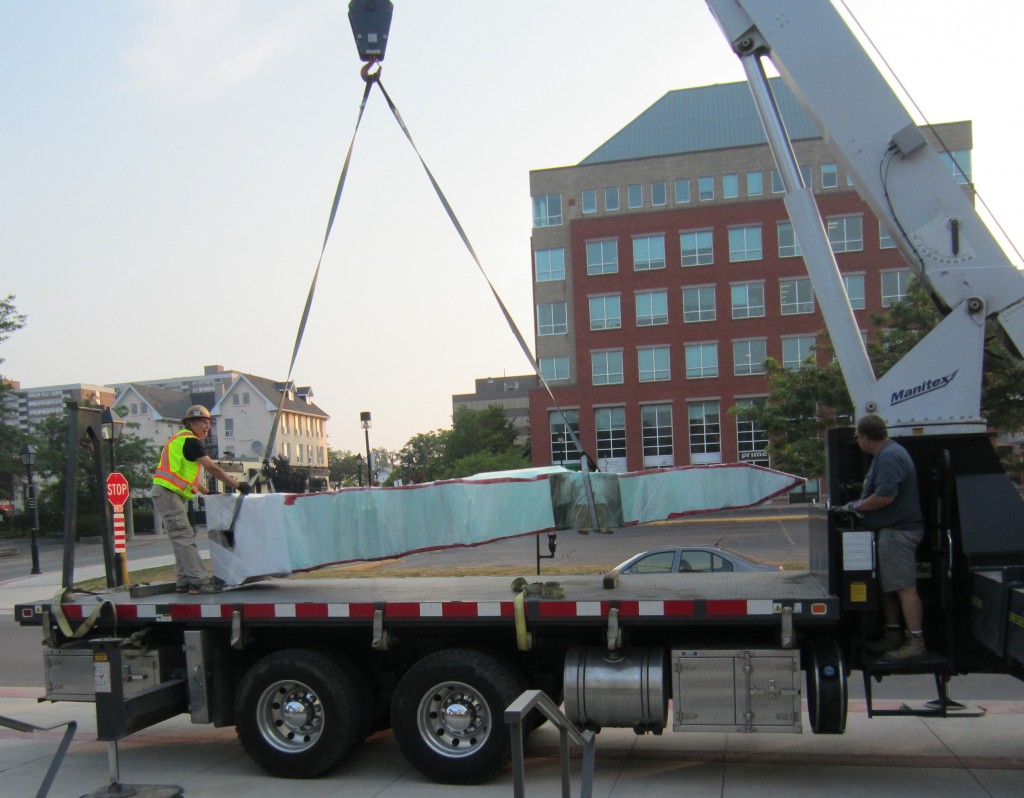 The time had come for Burlington’s Spiral Stela to be moved to its final home – outside the Performing Arts Centre. It wasn’t a mammoth structure. The crane would handle it easily and there was nothing complex about the task. Get it upright and lower it onto the four large bolts that had been installed, tighten up the bolts – and it`s done. Right?
If you remember the installation of the Orchids in November of 2011 on Upper Middle Road you’ll understand that Burlington and art are not quite in total, smooth sync – yet.
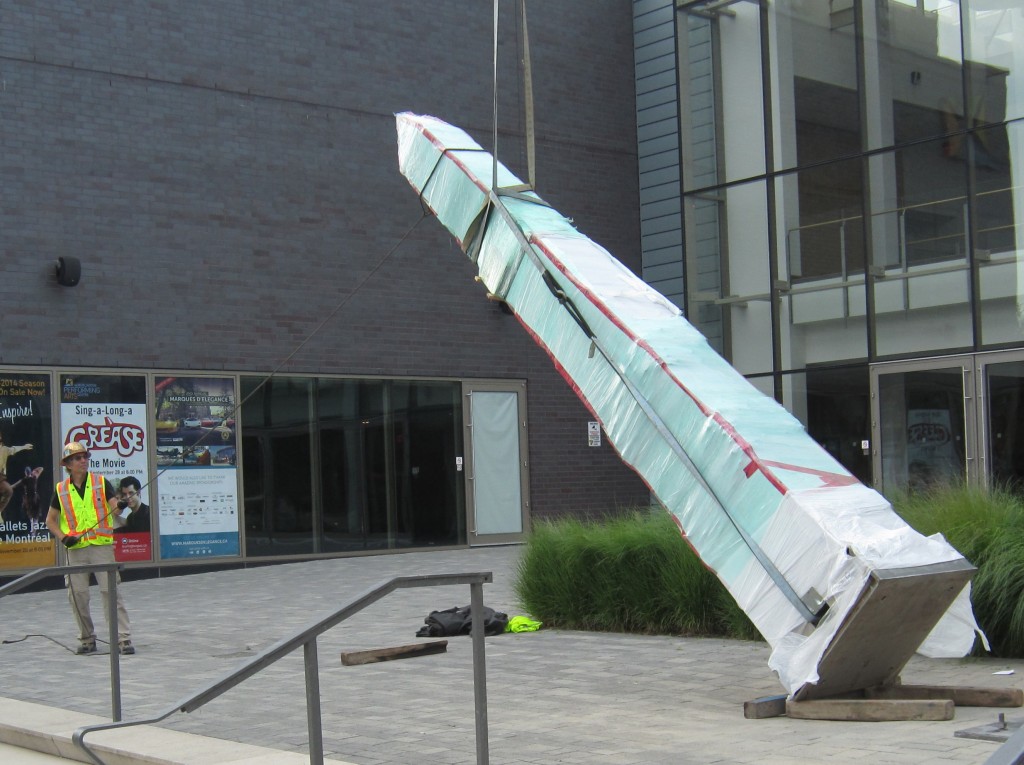 The Spiral Stela, getting ready to stand up and be locked into place – ready for the public to see for the next 100 years. Getting the piece of art off the truck and onto the plaza outside the Centre was the easy part. The crane operator and the artist worked together and eased it to the ground.
The base of the Stela is a ¾ plate of stainless steel with four holes drilled. There is an additional plate of steel that is thinner attached to the top of the base plate. It too had holes drilled into it.
A member of the installation team took a long steel rod and pushed it through the holes in the steel plates to ensure that nothing would block the bolts as the Stela was lowered into the base.
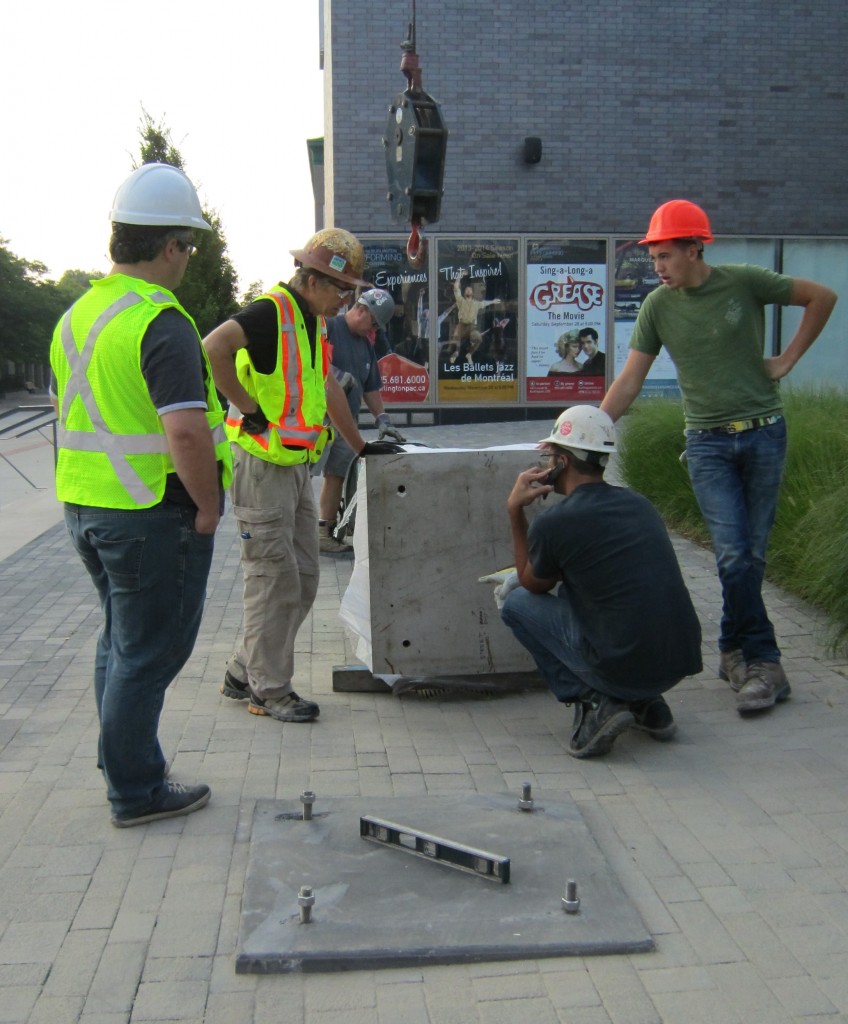 What do you mean the holes don’t line up? The bolts on the base plate in the foreground are supposed to slide into the holes on the structures base plate. They didn’t. Oops Oops – the rod did not go in – something was blocking the rod. Shades of the Orchids installation on Upper Middle Road when the installation team there discovered that the size of the bolts and the holes they were to slip into were not the same and a mobile crew with some very heavy-duty equipment was called in on very short notice to solve that problem.
Burlington was facing the same problem with the Stela: this time the inner plate had holes that were just a little smaller than the holes on the outer plate.
 Jeremy Freiburger works his cell phone – there has to be someone out there he can reach to solve this problem. How did this happen he wonders? It’s 7:00 am and it isn’t easy to find technical people at that hour – no one is at their shops yet. Jeremy Freiburger, the city’s public art program management contractor began t work his telephone list.
Off went one of the technical team to get a drill bit that would widen the holes. That didn’t work. Freiburger continues to madly work his cell phone – chasing down the people he needs to reach The plan was to have the Stela installed and veiled before the public was up and around.
The Stela was not to be seen by the public until it was officially unveiled on the Sunday afternoon..
More urgent phone calls. The technical team made another trip into Hamilton and came back with some grinding device that was inserted into the holes. Grinding noise, dust all over the place. Was it working?
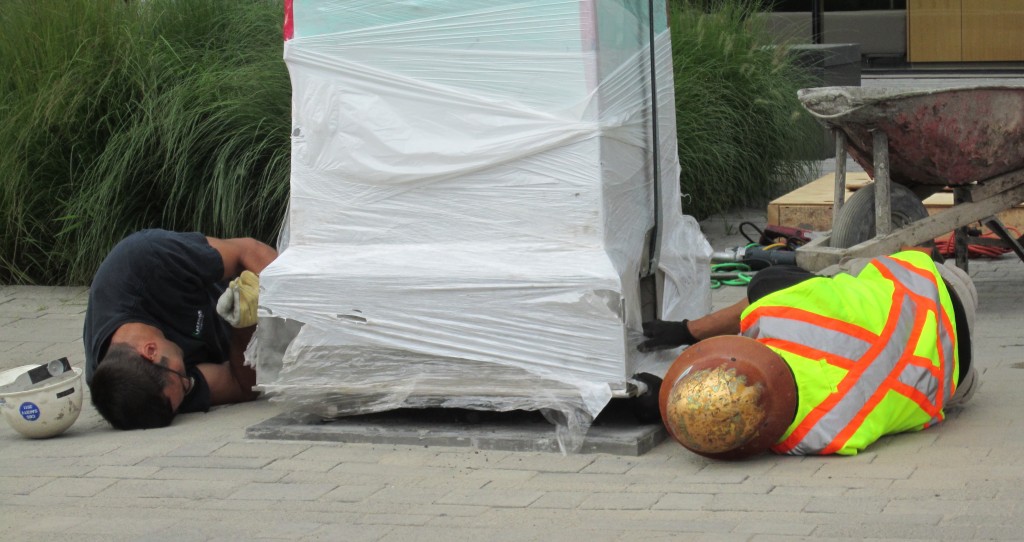 Close, close, very close – then the Spiral Stela was in place and could be locked down. Peter Powning put his finger inside the hole – the 1/8th of an inch of lip had been ground away. The installation could continue. The crane lifted the Stela upright, eased it in over the base plate and gently lowered into place – a little jigging and it slipped over the bolts and a much relieved Peter Powning put on the lock nuts and prepared to secure what is known in architectural circles as an obelisk.
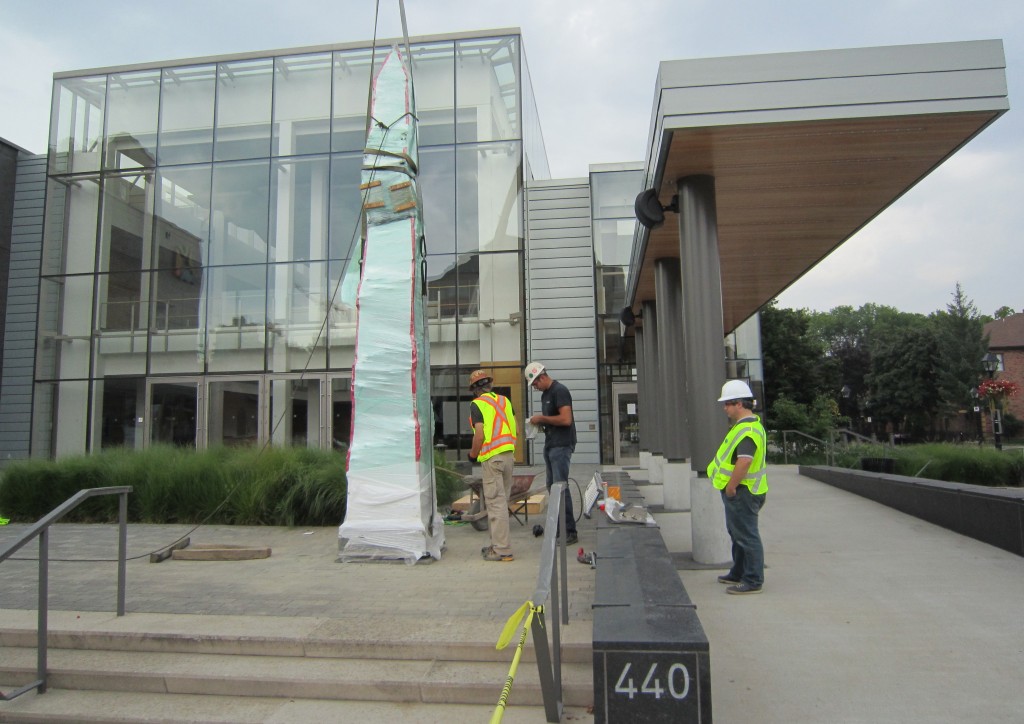 Done – now all they have to do is put the veil in place and Stela is ready for her public unveiling. Now all they had to do was strip away the packing material put the veil over the structure and they would be ready for the unveiling.
The veil was made of material that landscaping people use. Relatively heavy black cloth that Freiburger and his wife stitched at home. “We basted the pieces together so lightly that a decent tug and they would come apart.
Four tales were attached to the veil. Mayor Goldring, Peter Powning, the artist, Dan Lawrie, the benefactor and Chair of the Performing Arts Centre, Rick Burgess would be at the end of each tail to give them a gentle tug.
The public will then see a unique piece of work that has the city and its history stamped all over it.

 August 24, 2013 August 24, 2013
By Pepper Parr
BURLINGTON, ON. The Friends of Freeman Station have confirmed that the historic train station will move from the Burlington Fire Department headquarters to the station’s new location the week of Sept. 9. The station, built in 1906 by the Grand Trunk Railway, will be moved from its perch beside the Fairview Street fire station to corporately-owned land a couple of hundred yards away.
While the distance is short – the move signified, finally, that the station is going to be restored and won’t get torn apart for kindling.
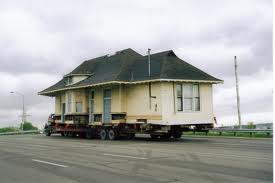 The Freeman station got moved around a number of times while the city figured out what it wanted to do with the thing. When city council failed to come up with a solution citizens led by Councillors Meed Ward and Lancaster more here. The move is the result of an agreement reached in 2012 between the city, the Friends of Freeman Station and manufacturer Ashland Inc.
“Stations aren’t supposed to move. Trains come and go and stations are supposed to wait for trains to stop,” said James Smith, president of the Friends of Freeman Station. “It looked like time and neglect would be allowed to take their toll on Freeman Station but today we are announcing encouraging news. The train station is moving and will be restored. I encourage people from across Burlington to watch this dramatic and historic move.”
The volunteers of the Friends of Freeman Station have worked since 2011 to save, stabilize, repurpose and find a new home for this piece of Burlington’s history. They have enlisted local companies to help return Freeman Station to its former condition.
“I am impressed and heartened by the work of the dedicated volunteers, supporters and donors who have given so much to preserve and restore Freeman Station,” said Mayor Rick Goldring. “This community effort ensures that Freeman Station has a role not only in Burlington’s past but also in its future.”
In May, McCulloch Building Movers installed steel beams under the structure. In June, Murison Restoration began preparing the station for the move. King Paving is getting the new site ready.
In a prepared statement Ward 2 Councillor Marianne Meed Ward said: “I want to thank all the volunteers who generously gave their time to make this move a reality. Without your efforts, the Freeman Station would have been lost. With this move, restoration work can begin so future residents can enjoy the station and learn about Burlington’s rail history, from delivering produce from our farms, to sending our young people to serve our country in the Great Wars.”
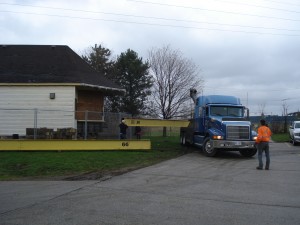 Steel beams are taken off a truck to be slid underneath the station so that it can be lifted off the ground, eased onto a flatbed and move the couple of hundred yards to its new home – where restoration will begin. Typical fluff statement when the truth is that were it not for Meed Ward and Ward 6 Councillor Blair Lancaster the station was a goner. These two women refused to let the station get chopped up for fire wood and convinced their colleagues on Council to give the community some time. Councillor Sharman’s behaviour during the debate was close to shameful. And we didn’t see all that much in the way of leadership from the Mayor.
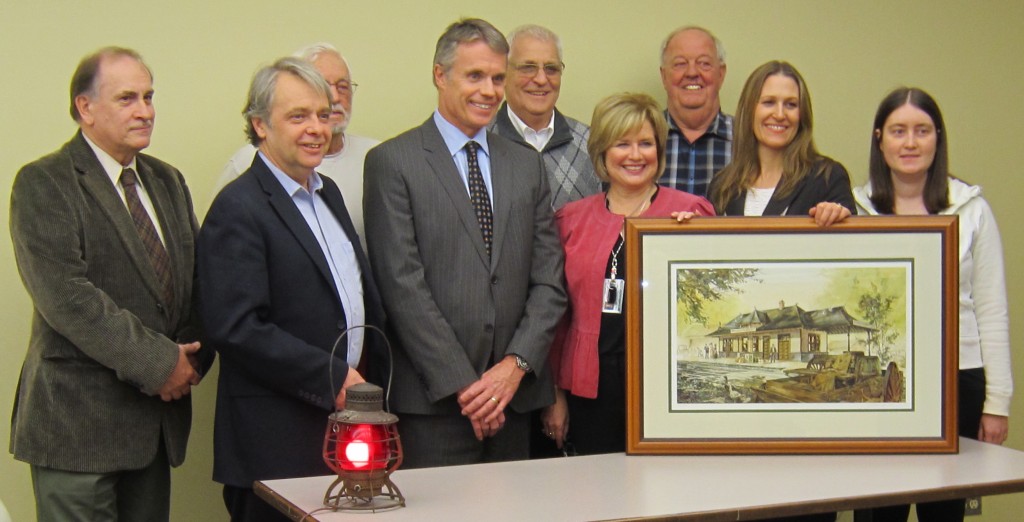 The deal gets done. City formally signs the agreement with the Friends of Freeman Station to have them take possession of the building and take on the task of restoring the structure. Burlington came perilously close to losing the historic structure. However, after a lot of discussion, loads of bureaucratic back and forth, the Freeman station is about to be taken for another ride. It has experienced several in its more than 100 years of existence.
Early in September the trucks that move buildings will ease the flat-bed beneath the station and ease it down onto the truck and then move it all of 250 yards and settle it into a location where the major renovation will begin. The structure weighs 45 tonnes. It is made of wood and shingles with a brick chimney. It is nearly 1,200 square feet.

 August 23, 2013 August 23, 2013
By Pepper Parr
BURLINGTON, ON. When any kind of entertainment event takes place, someone has to produce the show.
How these events come into being is often the result of chance meetings. Reg Titian invited Wayne Brown out to Mohawk Raceway to listen to The Drifters. That event was booked by Titian, who is one of a number of agents who does talent search and booking work for the Ontario Lottery and Gaming Corporation. He is also the Canadian booking agent for The Drifters
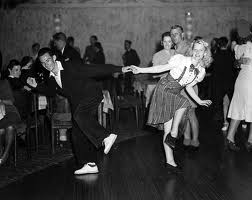 This is the way it was done back then. It was a form of primal and tribal communication – and it worked. 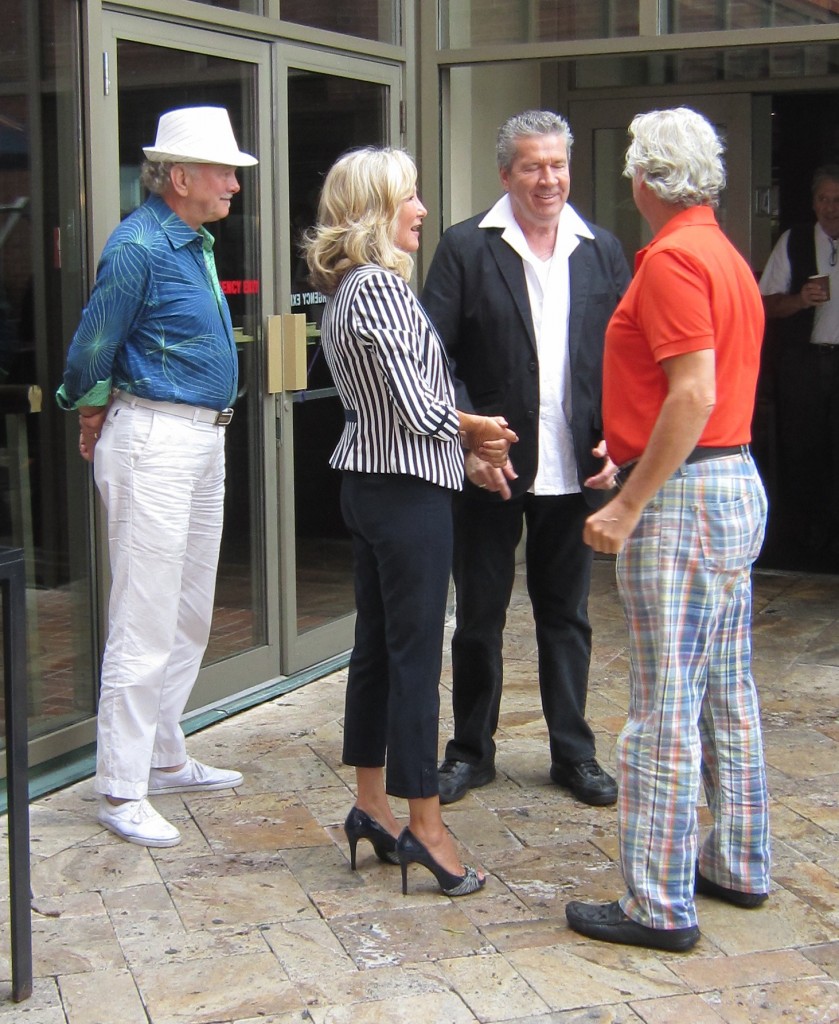 Reg Titian on the left with Connie Smith and Robbie Lane, who will share the MC job chat it up with Scott Robinson, co-chair of the Magic Moment event. Robinson just might wear those trousers to the event. Wowza! Reg began his career in music when he ran a store on James Street in Hamilton. For many years it did quite well. He ran retail for more than 25 years, taught music and was enjoying a good life until 1999 when the bottom fell out of retail and business in Hamilton was abysmal. Titian had to diversify and get into different lines of business because retail wasn’t working anymore.
Entertainment is show business and that was the direction Titian went as he grew into the He did work for the Niagara Falls Casino, has booked Diane Warwick and does a lot of work for the Norwich Fall Fair.
Festivals, country fairs, theatre productions are all part of what Reg Titian does now.
He had booked The Drifters into the Mohawk Raceway and invited Wayne Brown out to hear the show. Wayne went and left that show with an idea. Why not create a Magic Moment in Burlington and tie it into the Halton Heros event that was raising funds for police officers and their families that needed help when misfortune befell them.
Wayne Brown talked to Keith Strong who was heading up the Community Cares Committee of Halton, a group that pulls together citizens from Burlington, Oakville, Milton and Halton Hills who gather once a year to hold a gala that raises funds for police services members who need help.
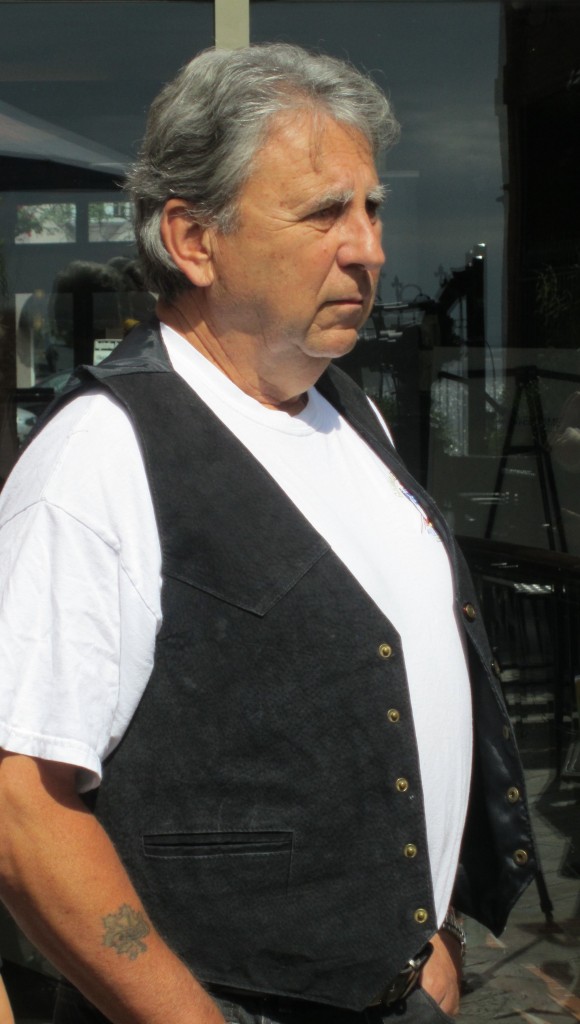 Wayne Brown, along with his co-chair Scott Robinson has stick handled the field work that will make the Magic Moment happen. So when Wayne Brown got back to him with the Magic Moment idea and the Drifters Titian was their man.
Eric Kohanek, a former television journalist with the Spectator knows the Drifter well and explains that “the original Drifters group formed in 1953 and there were dozens of guys who joined up and then left over the years. The group that appears at Mohawk Raceway and other venues in Canada from time to time is actually called “The Drifters Featuring Rick Sheppard.” Sheppard didn’t join the original group until 1966.”
“The original Drifters are actually based in the U.K. and are touring there in September. The other groups calling themselves The Drifters are actually splinter groups, not the original one.
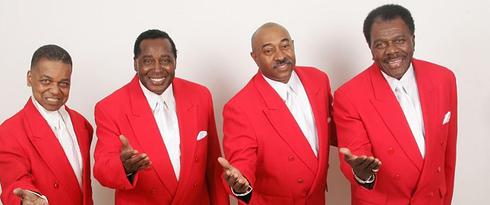 With many millions of records sold – the Drifters are going to be in town to bring back a lot of those Magic Moments. “Sheppard’s achievements since then are certainly noteworthy. He currently owns the Canadian trademark for the Drifters name and has re-recorded some of the original group’s hits as well as songs that sound similar in nature but have no link to the original group. He also reportedly won a lawsuit recently that prevents any other Drifters groups from performing in Canada.”
It’s an interesting story – all part of the Magic Moment that will take place in Burlington September 13th, at an exclusive Soiree to take place at the Waterfront Hotel.
Saturday evening The Drifters will take their Magic Moment to a much larger audience that will assemble at Nelson Park starting at 2:30 in the afternoon and run on until the last dance.
If you’re close to sixty you will know the music. “On Broadway”, “Under the Boardwalk”, “Save the Last Dance for Me”, “Up On the Roof”, “This Magic Moment”, “There Goes My Baby”, and many more. The songs are etched into the memories of music fans worldwide and helped form part of the foundation of contemporary popular music. What these songs have in common is that they are all the product of a veritable hit-making machine better known to their millions of fans as The Drifters.
Rick Sheppard is an integral part of that hit making machine. He has been there for more than 45 years. Rick joined The Drifters in 1966 and recorded with the group on Atlantic Records through the early 1970s. During that time, he toured with The Drifters throughout the world and shared stages with some of the greatest names in music and show business. You can look it up in books and anthologies chronicling The Drifters history. Rick Sheppard is prominently featured.
Sheppard, a born entertainer, has been at the forefront of the music industry from the time he can remember. He began performing at the age of nine years old and by his teenage years had a number of local television appearances on his resume. His first real professional engagement occurred in Miami, Florida, opening for Sammy Davis, Jr. Right then, young Sheppard knew what he wanted to do for the rest of his life. He wanted to entertain.
The first several years would see Sheppard on the road in a seemingly endless stream of one-night night club performances. During that time, he was in and out of a variety of groups as well. His career seemed to be lacking a real direction, and then came the telephone call that would change his life. Forever.
It seems that a songwriter familiar with Sheppard mentioned his name to legendary manager George Treadwell who managed the Drifter. He was looking for someone to replace one of the singers in the group. Sheppard’s songwriter friend was persuasive enough to get Treadwell to call Sheppard to see if he would be interested in joining The Drifters.
At the time Sheppard thought the caller was a friend playing a joke, so he hung up. Fortunately, Treadwell called back, assured Sheppard that he was, indeed, the manager of The Drifters and that the offer was genuine. After a quick apology and three seconds to think it over, Sheppard said, “yes,” and became a part of one of the greatest hit-makers in the history of contemporary popular music. The rest, as they say, is rock ‘n’ roll history.
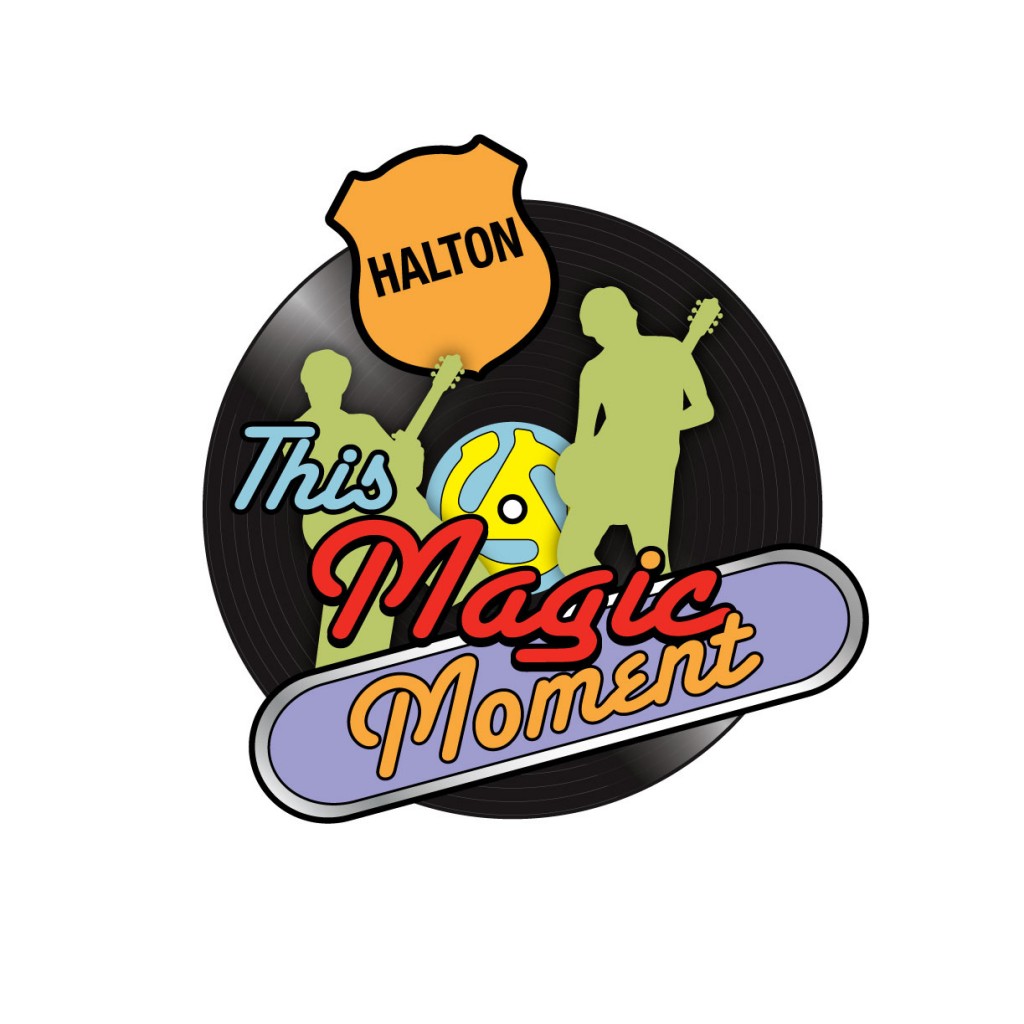 It will be one of the biggest one night events the city has seen in some time – and all outdoors, under the stars – at Nelson Park. The Drifters featuring Rick Sheppard are entering their fourth decade thrilling audiences in the United States, Canada, and worldwide. Their show is high energy and visually entertaining, mixing the classic Drifters repertoire that fans have come to know and love along with hits from the 1970s and 1980s done up in the unique Drifters style.
In 1996, they released two albums and have since sold millions of records.
That’s a lot of records and the Drifter are a load of talent – and for two days in September they will sing, entertain and provide music that people can listen and dance to at an evening under the stars at Nelson Park.
Tickers for the Friday evening Soiree are still available on-line. And there is still some room at Nelson Park – tickets available on-line. Show the partner in your life that you’ve not forgotten the music and you’ve not forgotten the person that took you to that Magic Moment music a long time ago.

 April 21, 2013 April 21, 2013
By Ray Rivers
BURLINGTON, ON. Last June, the Russian parliament unanimously passed a law that criminalizes “propaganda of non-traditional sexual relations among minors”. Presumably directed at the media, fines can reach as high as a million rubles, about $30,000 (Can) for a violation. It is unclear whether religion, increasing social conservatism, or the perceived need by Russians to reverse their falling birthrate was the stimulus for this bill. It is also unclear how broadly the authorities will interpret the new law.
We need to understand that homosexual relations in Russia have been legal since 1993 and still are. And though we see this new law as objectionable, when it comes to sexual discrimination Russia is in a far different league from the 38 African countries, including Uganda, which criminalize or otherwise repress homosexual activity. And Russia is nothing like Qatar and Iran where, under Iranian law, someone committing a homosexual act may receive 60 lashes or even the death penalty.
 The LBGT community has chosen to be very public in response to the repressive actions of the Russian government. It has taken a long time for the lesbian, gay, bisexual, and transgender (LGBT) community to finally achieve a broad measure of equality and human rights in places like Canada and the USA. It was only 1967 when a young minister of justice named Pierre Trudeau ‘liberalized’ Canada’s criminal code on homosexuality, saying “the state has no business in the nation’s bedrooms”. Finally passed in 1969, this legislation also decriminalized abortion, and contraception, and further regulated lotteries, gun possession, drinking and driving offenses, harassing phone calls, misleading advertising and cruelty to animals. Passed by a two-thirds majority it was mostly opposed by the Conservatives, Social Credit and a lone Liberal.
In 2005 Paul Martin’s Liberals passed the Civil Marriage Act, making same-sex marriage legal in Canada, the fourth nation in the world and the first outside of Europe to do so. Again, the Conservatives were generally opposed. In fact, one of the early acts of the new Conservative minority government in 2006 was to reconsider (revoke) that legislation, a bill which was rebuffed by the other parties.
So, Foreign Affairs Minister John Baird, deserves considerable credit for taking on Russia, and Uganda and for bringing his Prime Minister and his political party on-side. He did the right thing, getting onto the curve of social opinion. Canada’s pro activity on this issue has not been unnoticed around the world, and is a much-needed step to restoring our international reputation. And John Baird, the former Tory bulldog has emerged as a respected diplomat for his efforts.
Our advocacy on this issue today is important, as the world community prepares to assemble in Sochi, Russia for the winter olympic games next year. Canada’s role has, no doubt, emboldened similar responses from the US, EU and IOC (Olympic Committee). Russia’s sports minister counters that this is an invented crisis, and he has promised to preserve the rights of all athletes attending the games. So why, then, did the Russians choose this time to pass such regressive, discriminatory, poorly defined and probably unworkable legislation?
 Russian athletes make their views on gay relationships really clear. Indeed Baird has displayed a progressive social characteristic that many complain is often so absent among conservatives and conservative policy. But we should remember that it was the capable Conservative justice minister Kim Campbell who liberalized and, thus, ended the abortion debate in this country. It was Brian Mulroney who led the attack on South Africa’s apartheid policies, in the face of American and British opposition. And Mulroney, despite his close relationship with US president Reagan, stood up against US aggression in Nicaragua, recalling another Canadian PM’s ethical positions on Vietnam and Cuba.
Russia’s new law may put an end to re-runs of ‘Will and Grace’ on Russian TV. The new censors there will have their hands full, cutting the ‘art’ which happens to ‘imitate life’ from the global media for Russian viewers. But it won’t stop the progress of civil and human rights everywhere. LGBT rights in Canada are among the most advanced in the world, and the debate here is over. It has been a long road and there is no going back. In the words of a former prime minister, “ what’s done in private between (consenting) adults doesn’t concern the Criminal Code”.
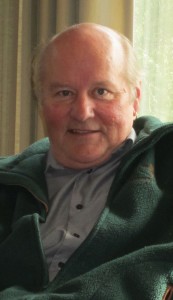 Ray Rivers was born in Ontario; earned an economics degree at the University of Western Ontario. He taught in New Zealand and earned a Master’s degree in economics at the University of Ottawa. His 25 year stint with the federal government included time with Environment, Fisheries and Oceans, Agriculture and the Post office. Rivers left the federal government to consult for private sector and government clients. He completed his first historical novel The End of September in 2012; a story about what might have happened had Quebecers voted for sovereignty association in the 1980 referendum. Rivers is active with ratepayers groups, a food bank, environmental organizations, community journalism and policing. He has run for municipal and provincial government offices and held executive positions with Liberal Party riding associations. He developed the current policy process for the Ontario Liberal Party. Ray Rivers was born in Ontario; earned an economics degree at the University of Western Ontario. He taught in New Zealand and earned a Master’s degree in economics at the University of Ottawa. His 25 year stint with the federal government included time with Environment, Fisheries and Oceans, Agriculture and the Post office. Rivers left the federal government to consult for private sector and government clients. He completed his first historical novel The End of September in 2012; a story about what might have happened had Quebecers voted for sovereignty association in the 1980 referendum. Rivers is active with ratepayers groups, a food bank, environmental organizations, community journalism and policing. He has run for municipal and provincial government offices and held executive positions with Liberal Party riding associations. He developed the current policy process for the Ontario Liberal Party.

|
|

















































































































